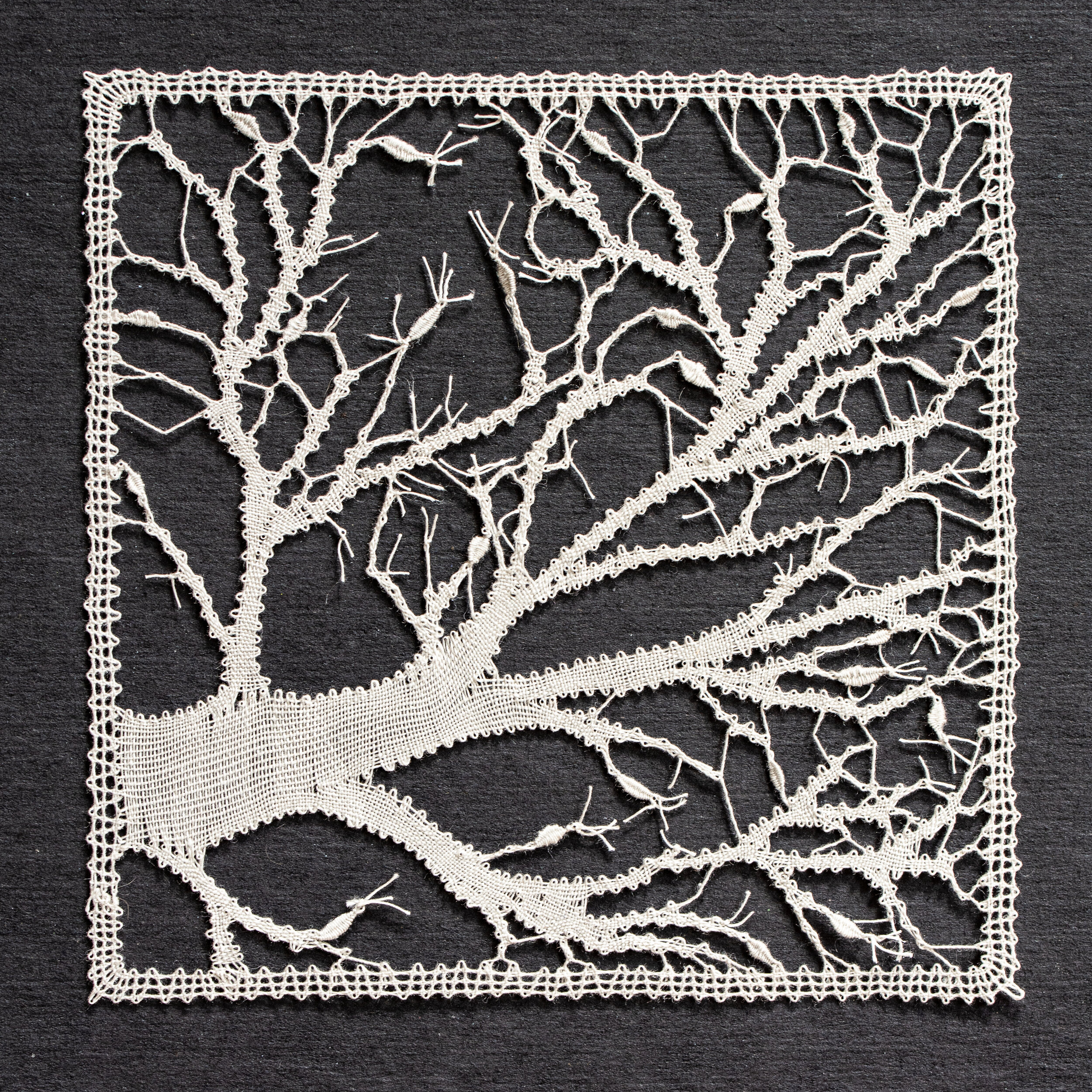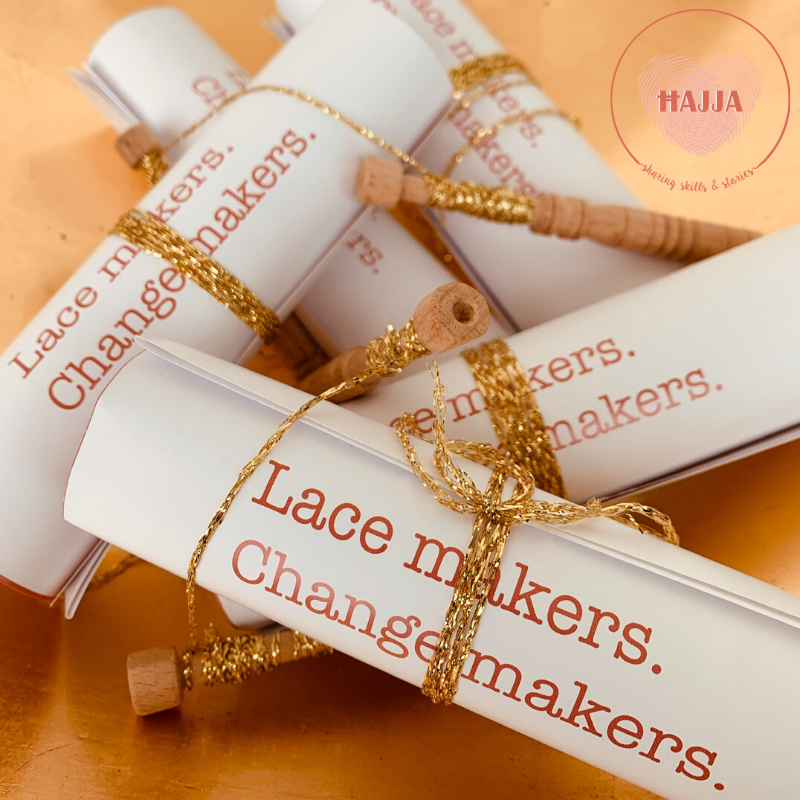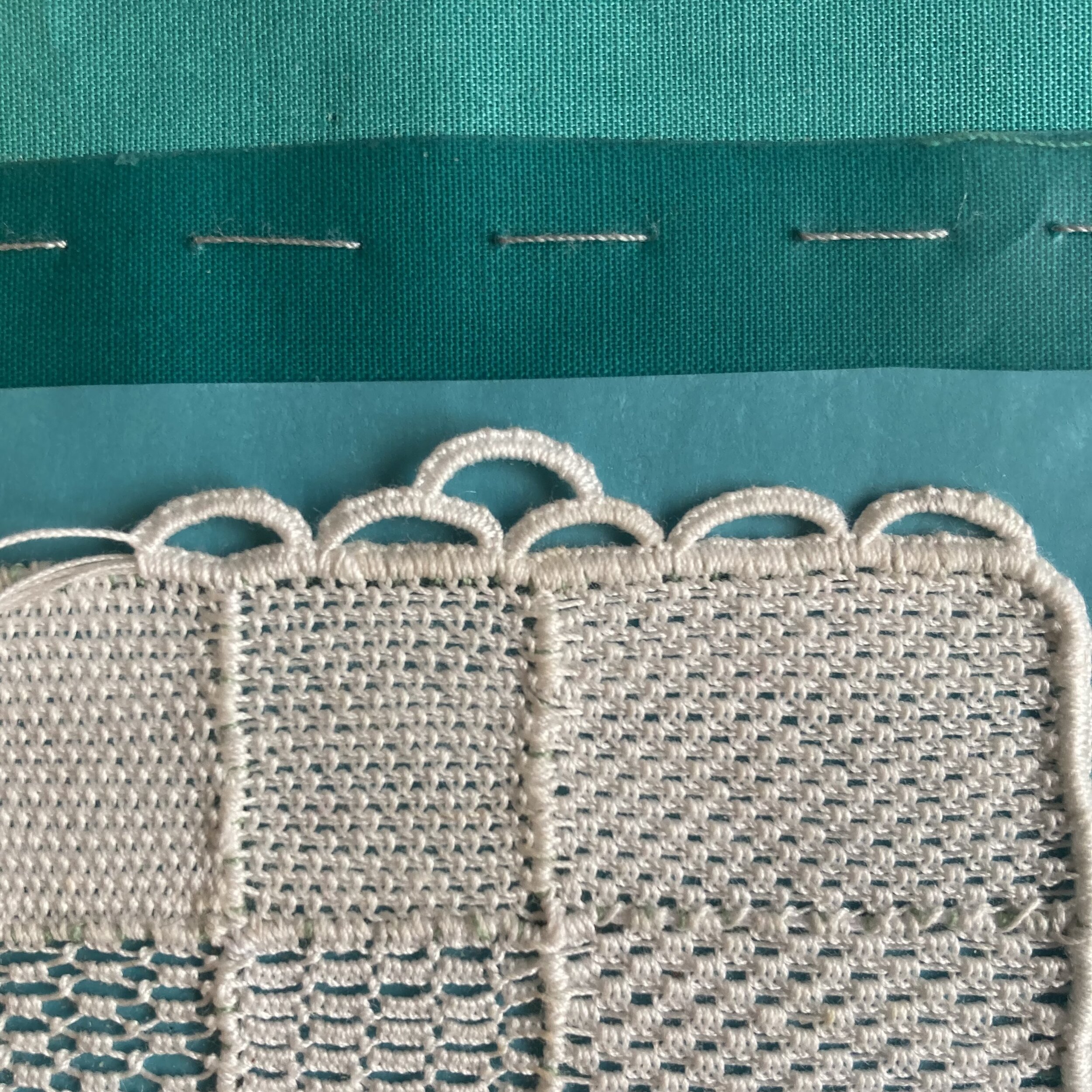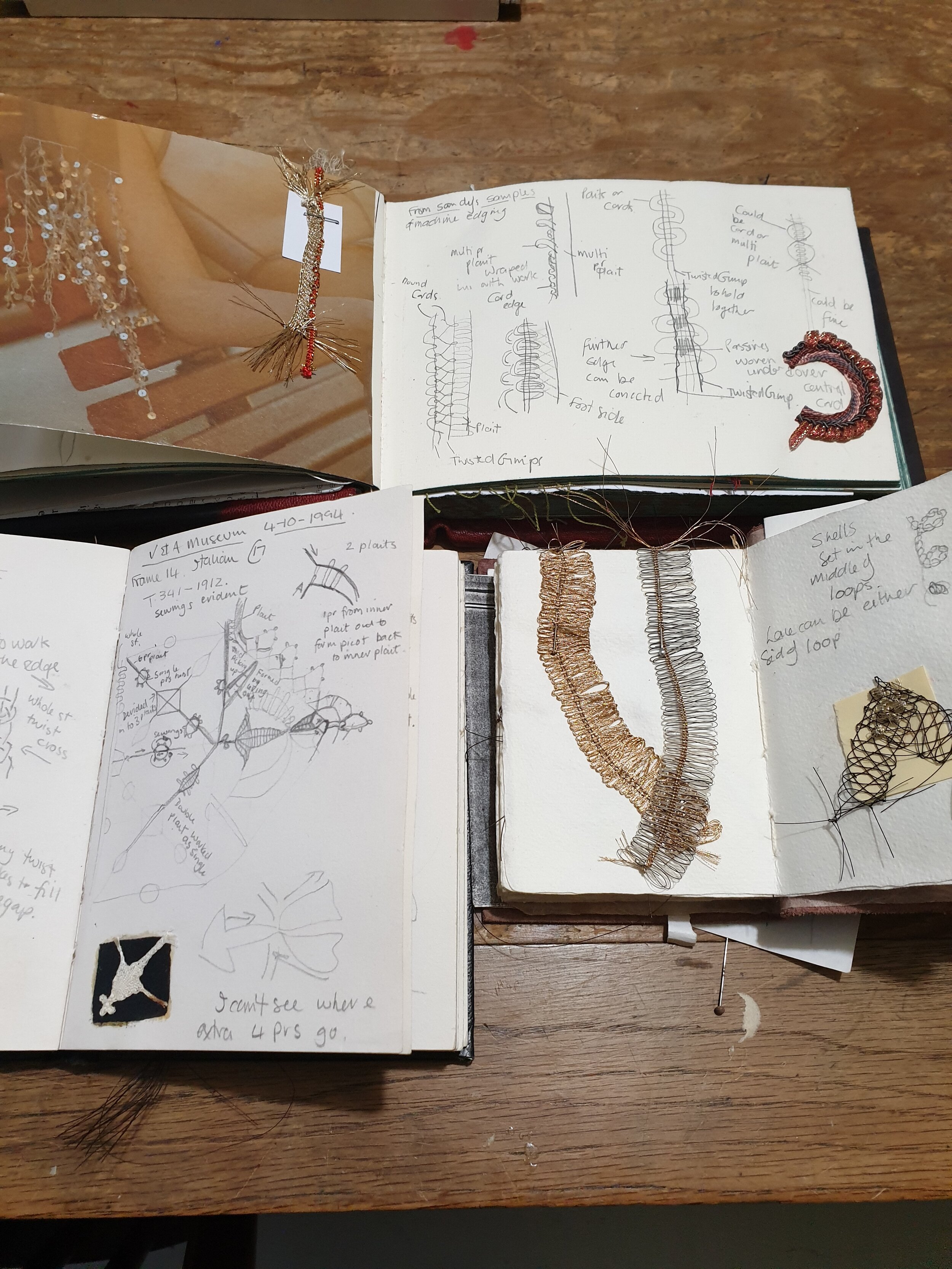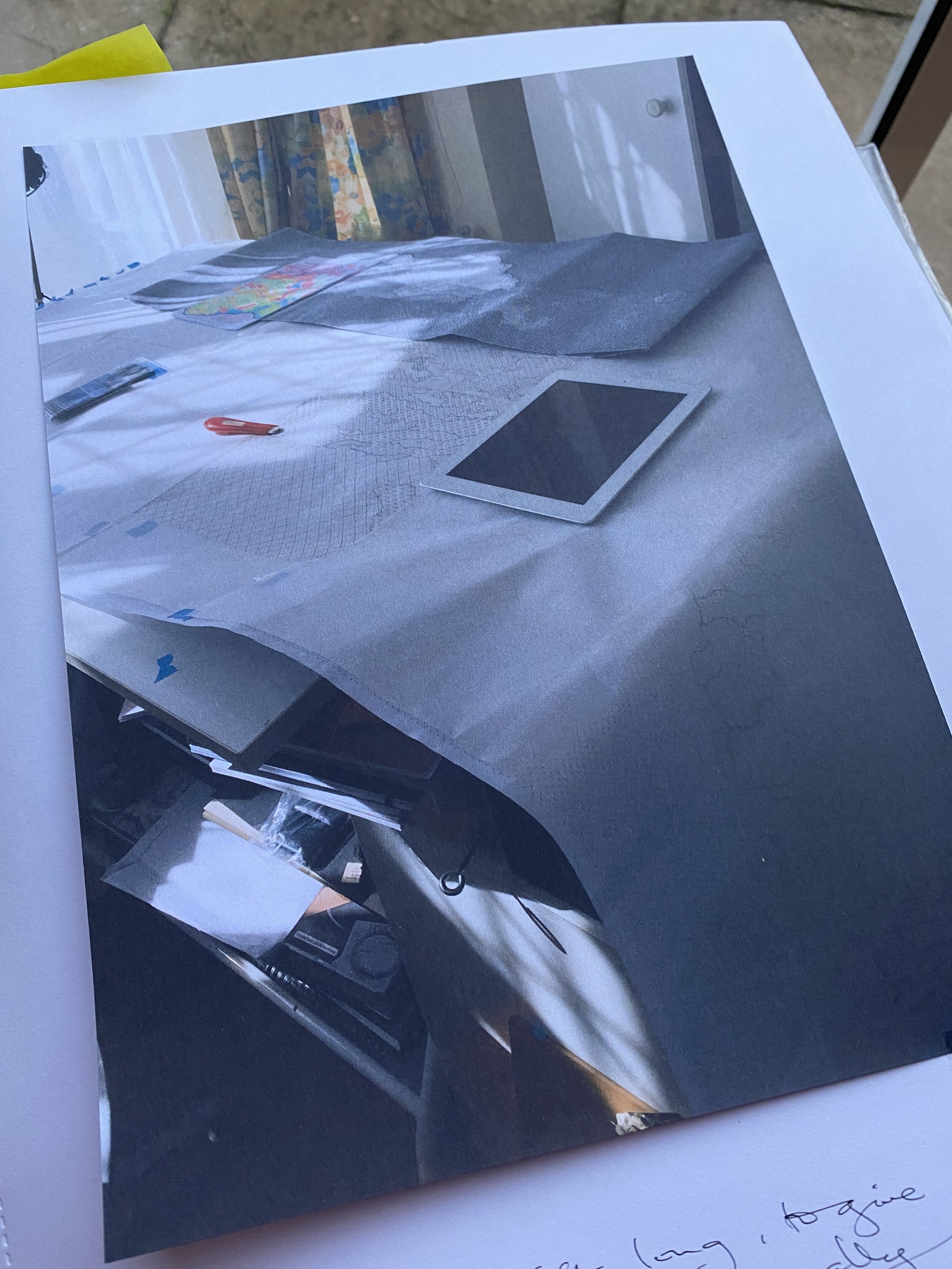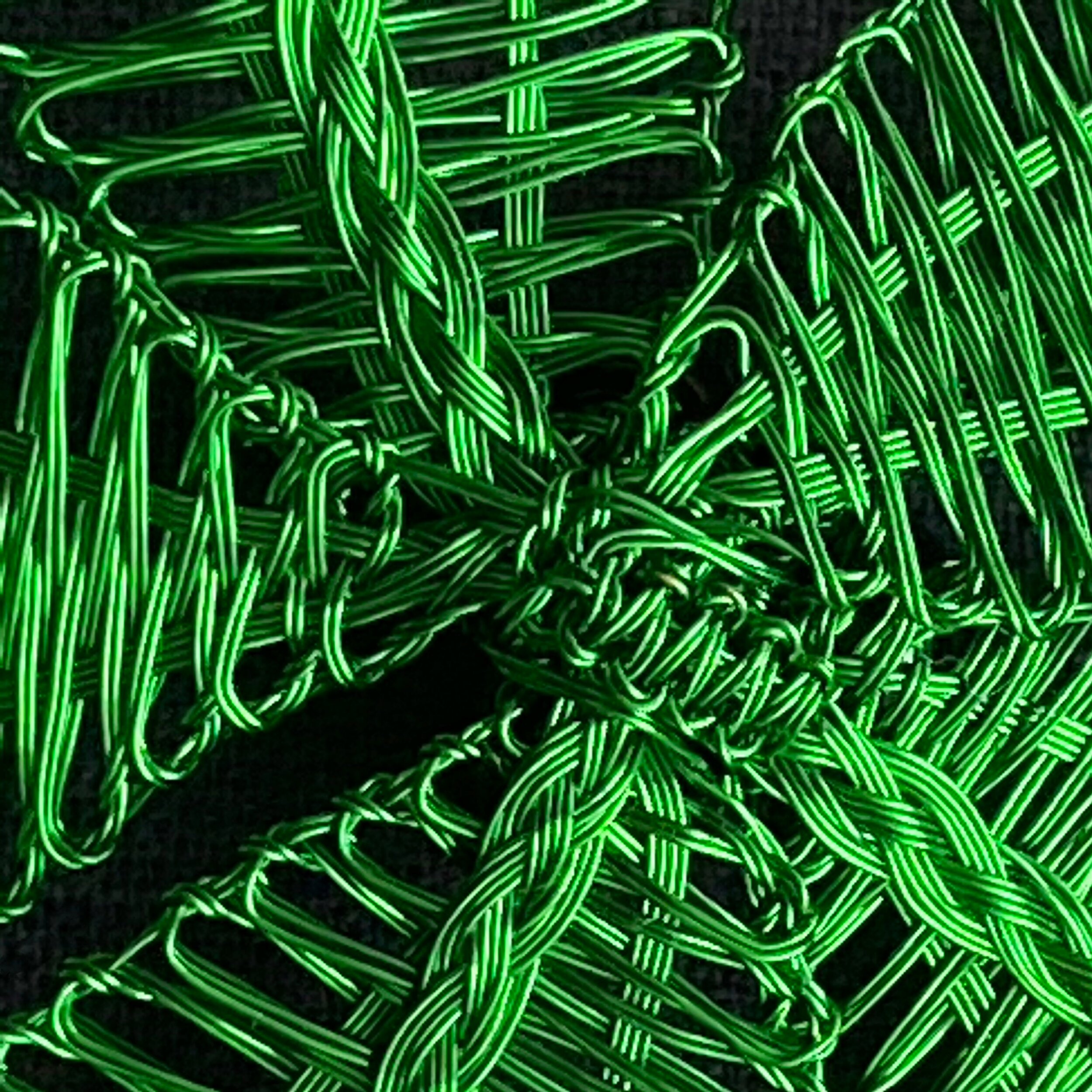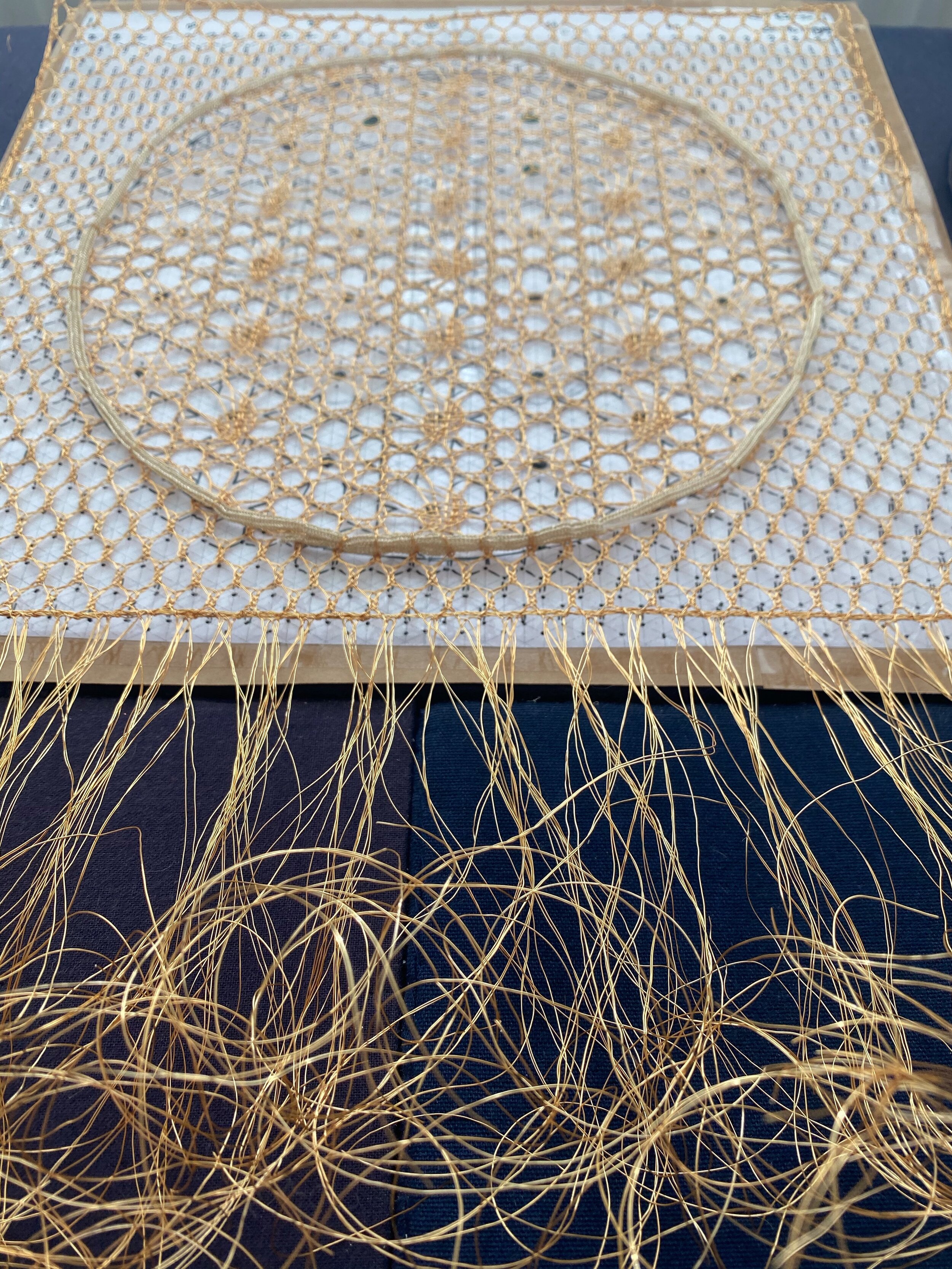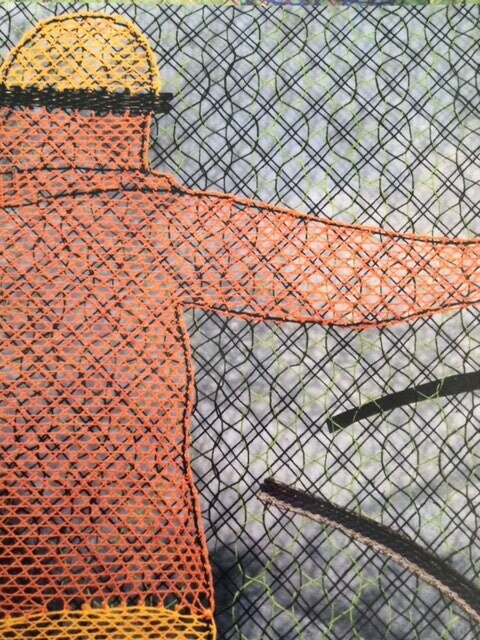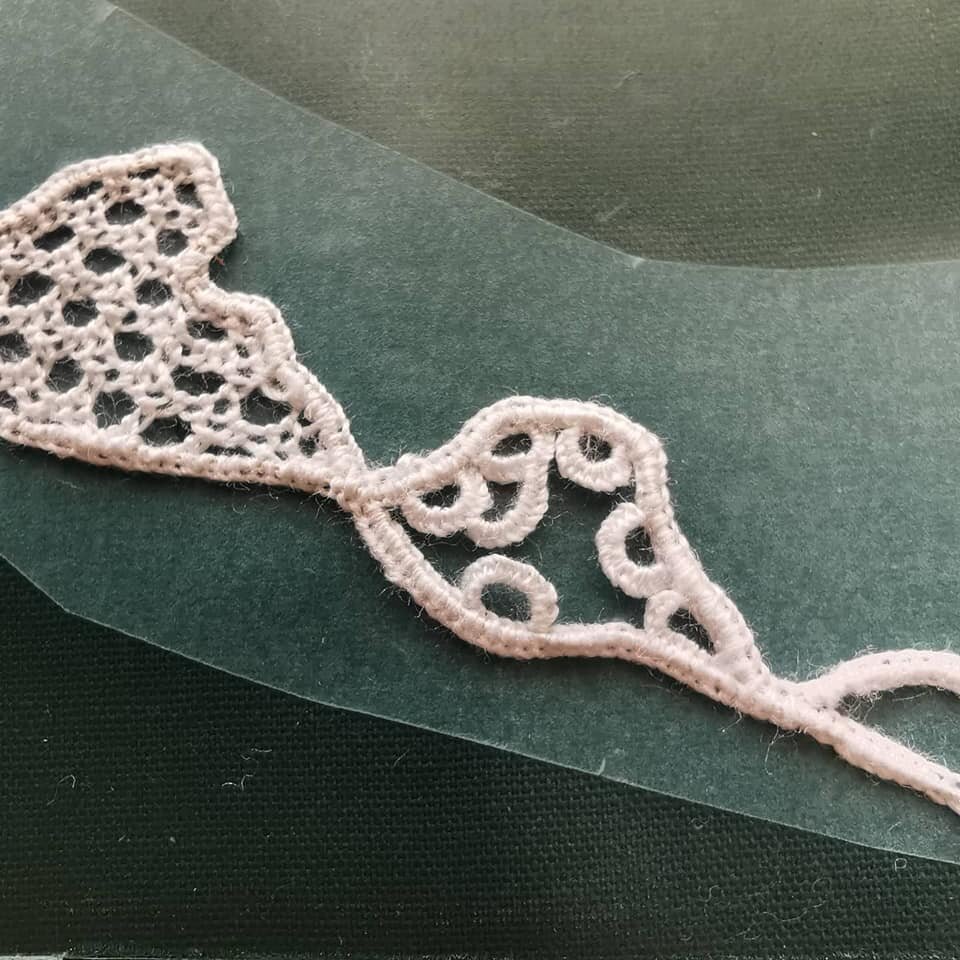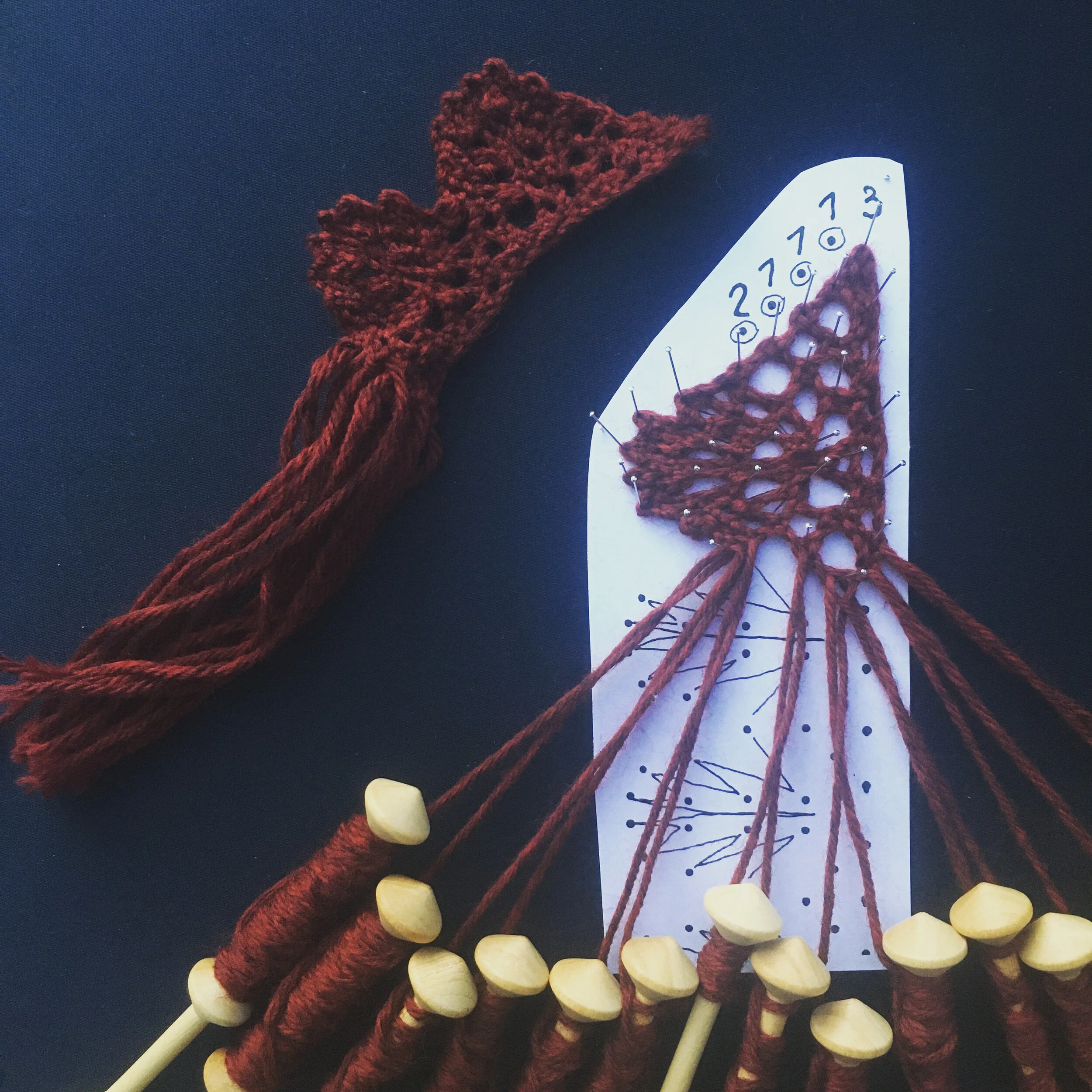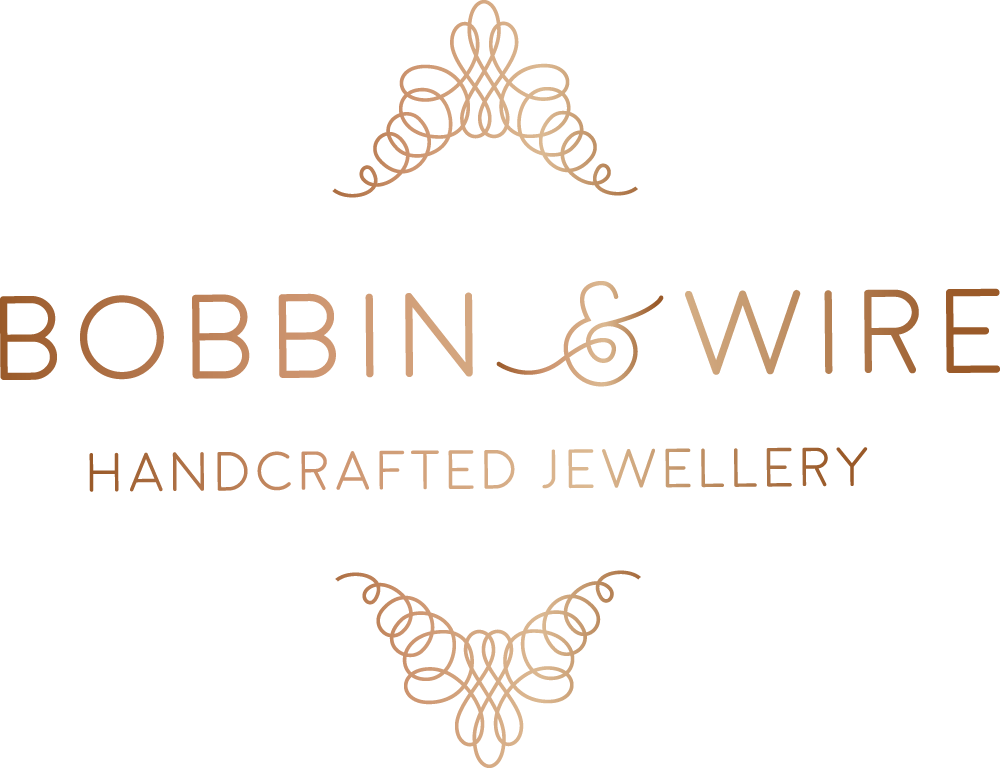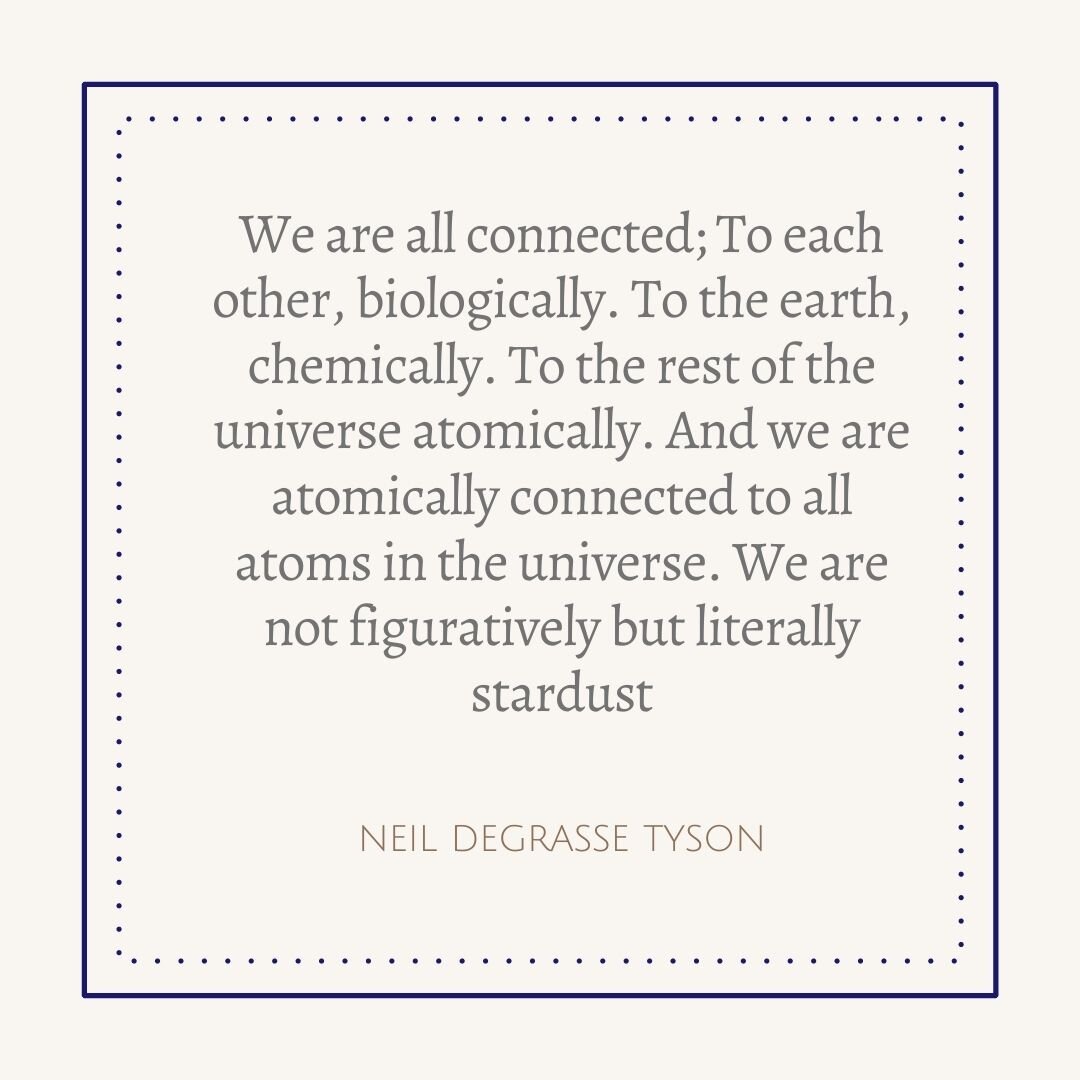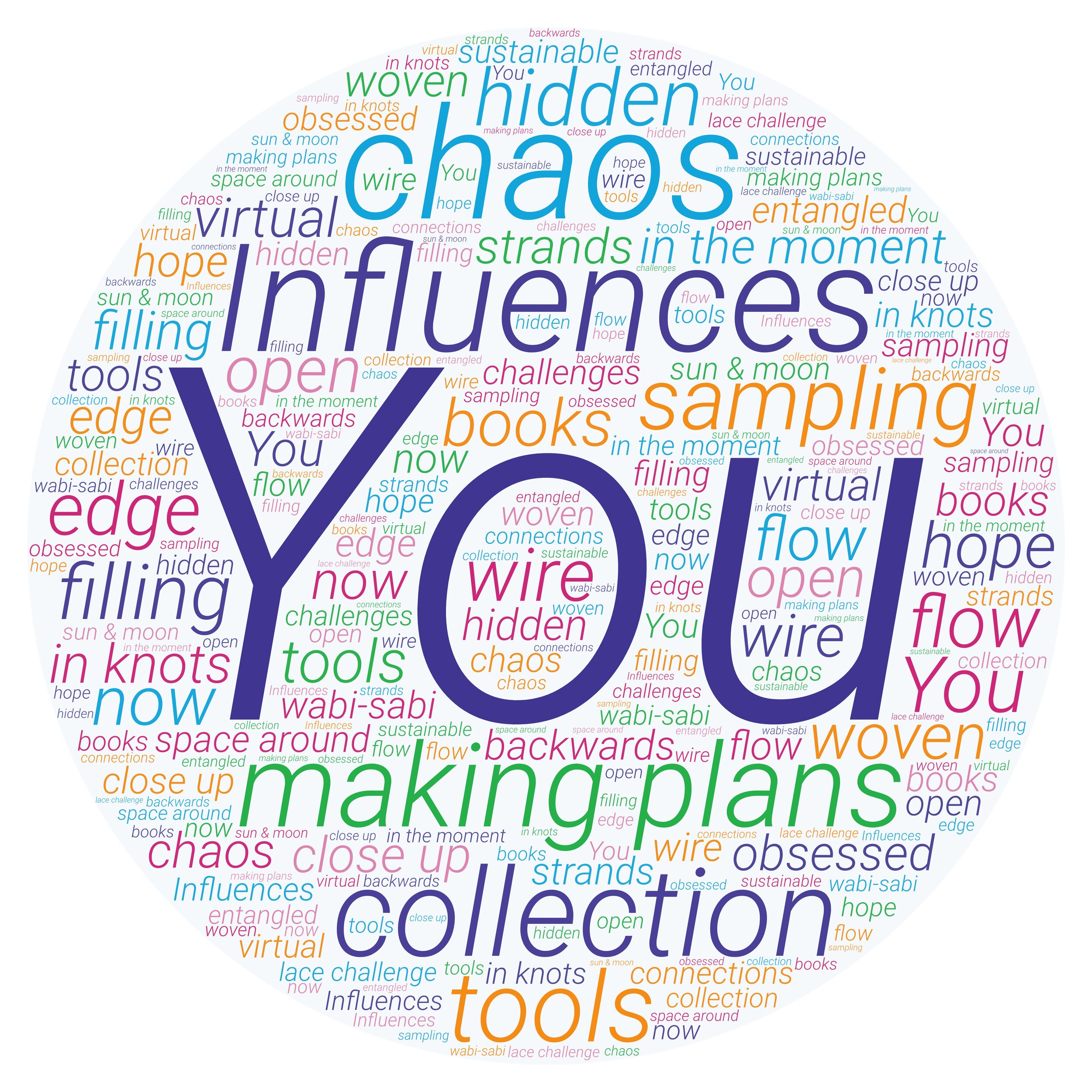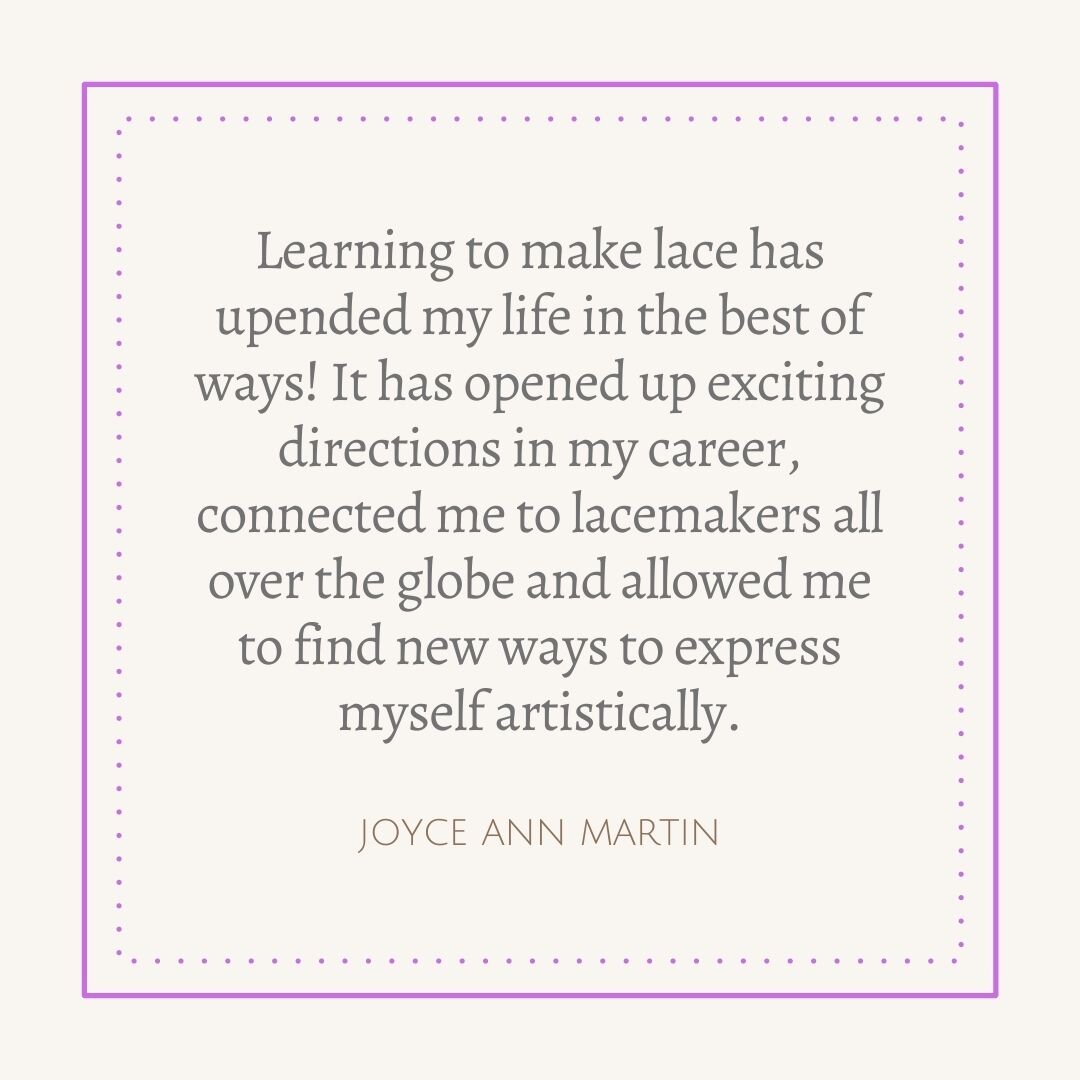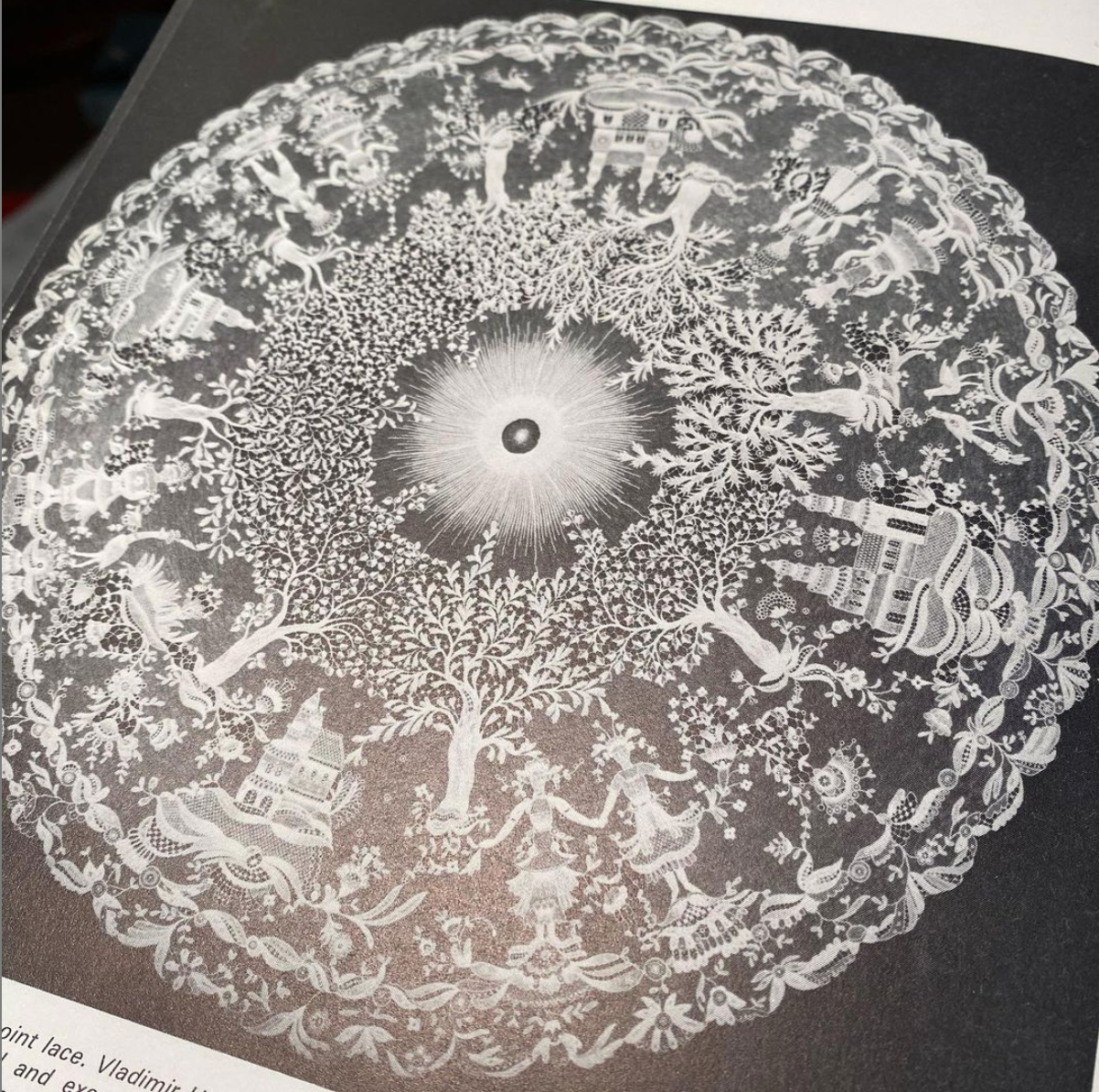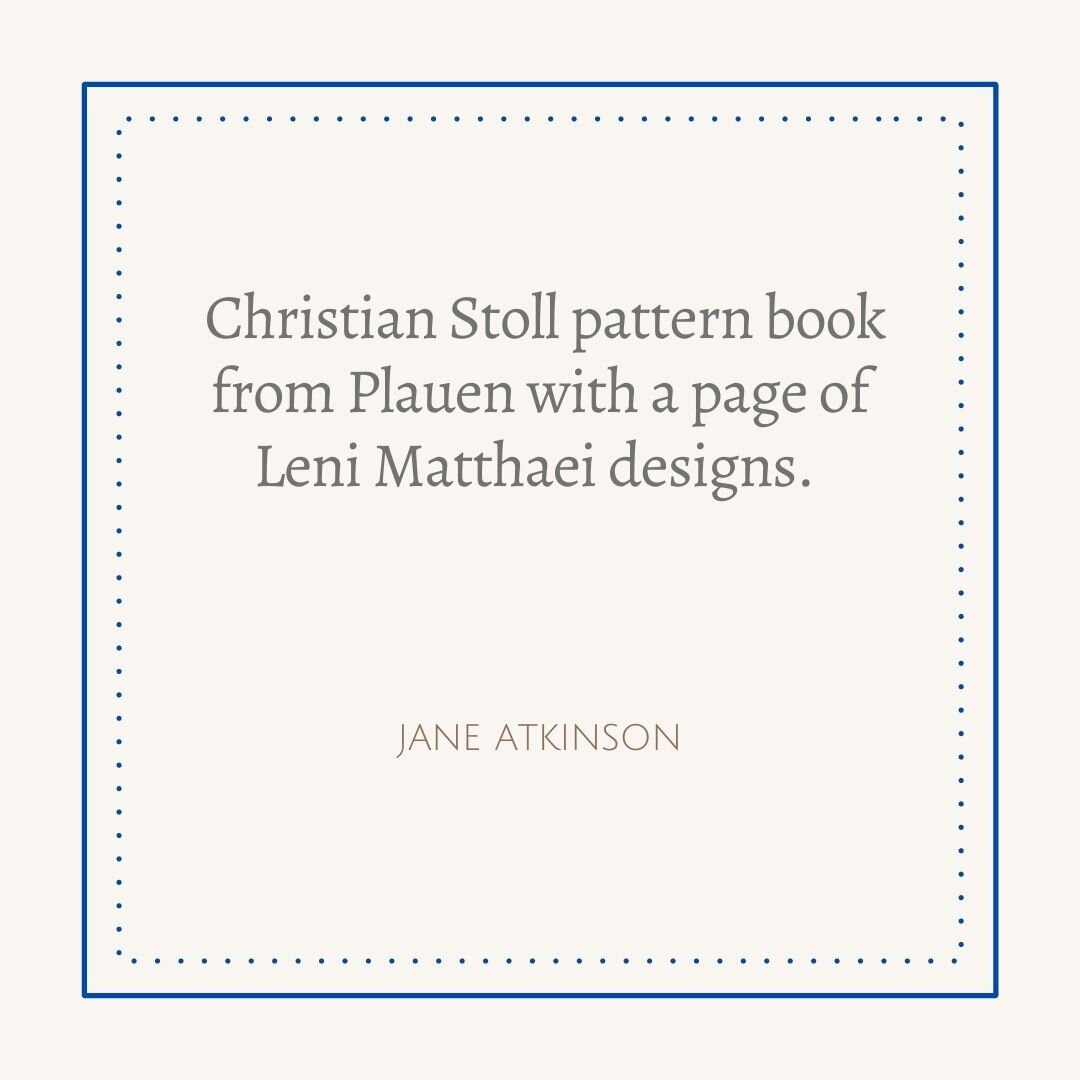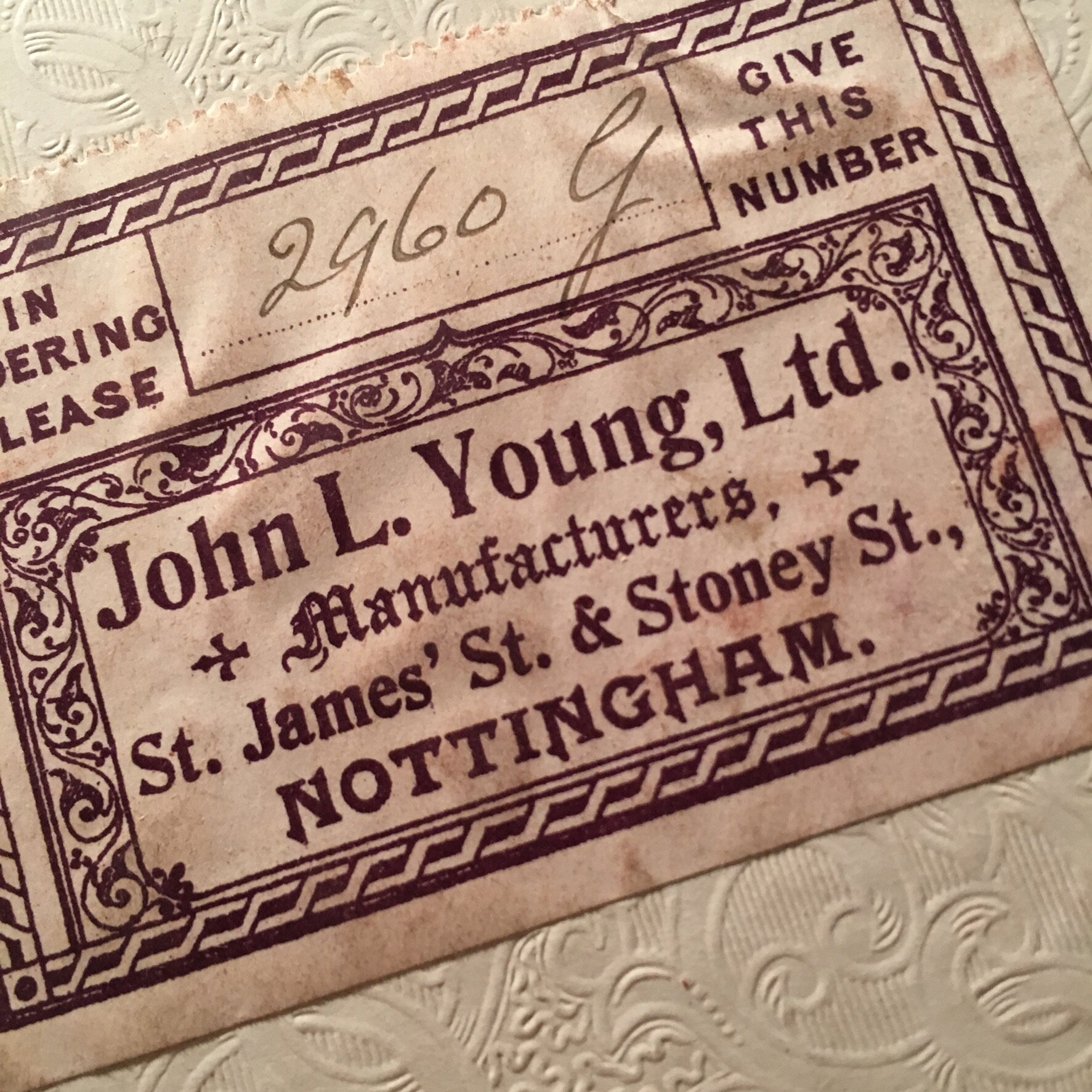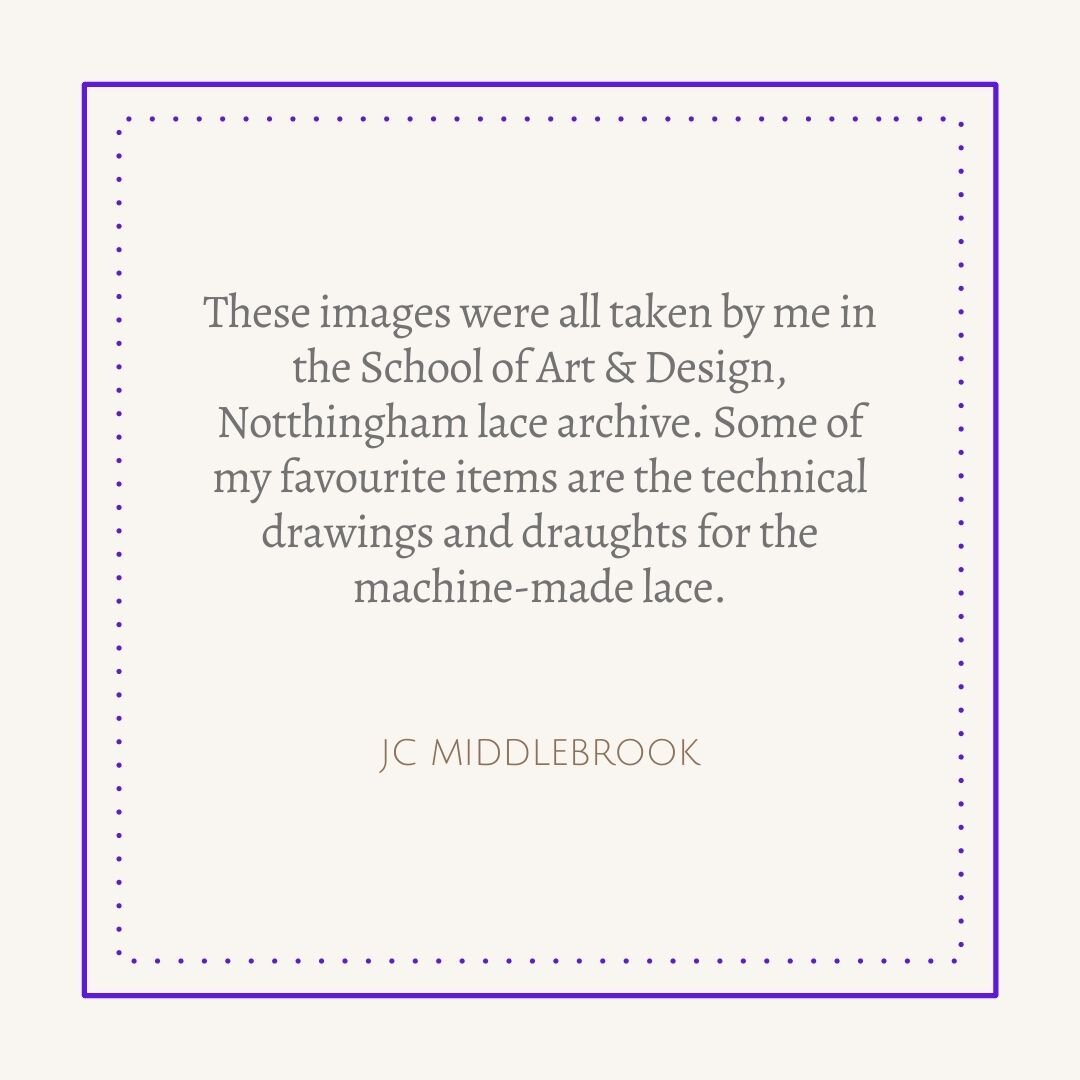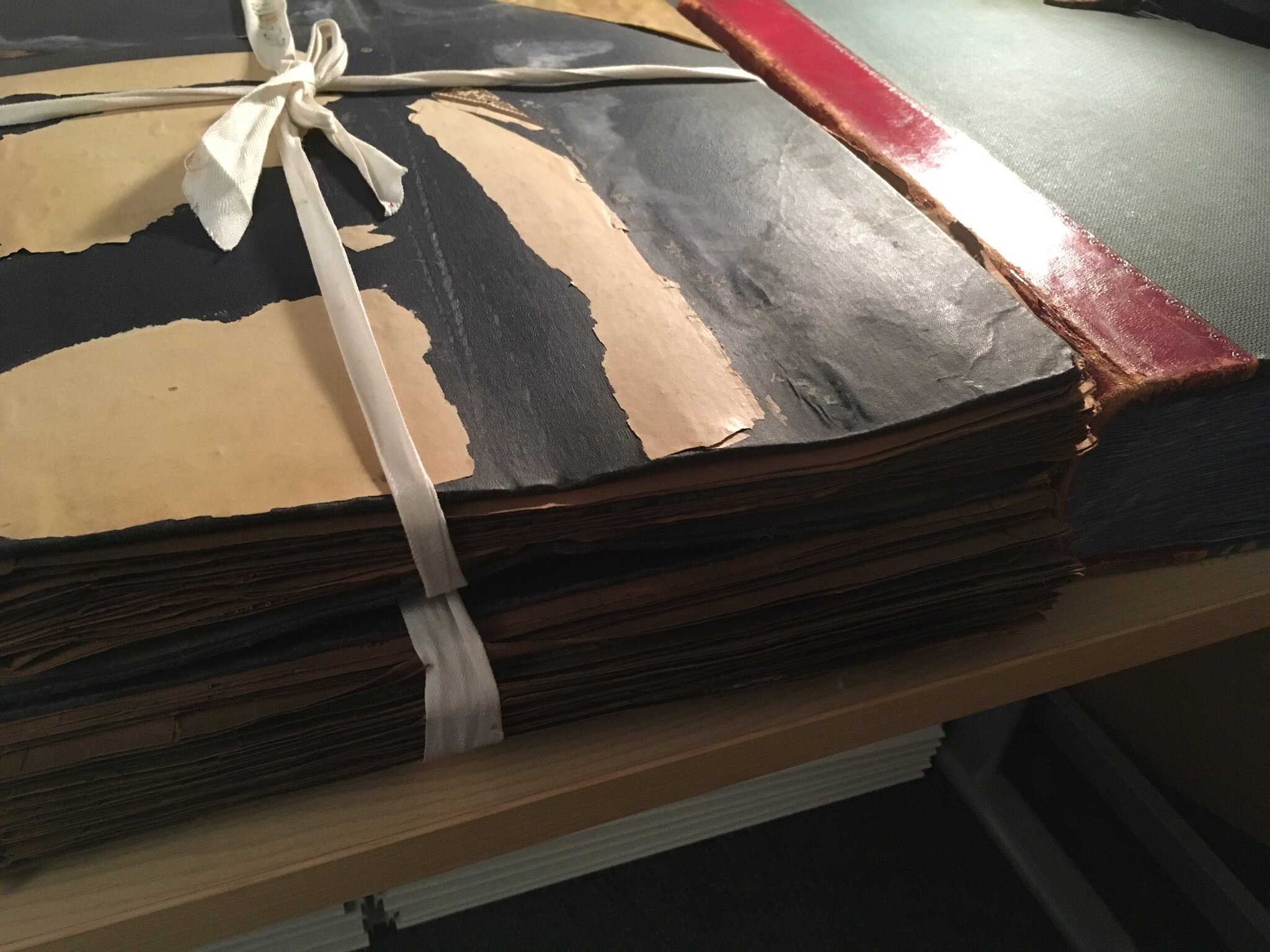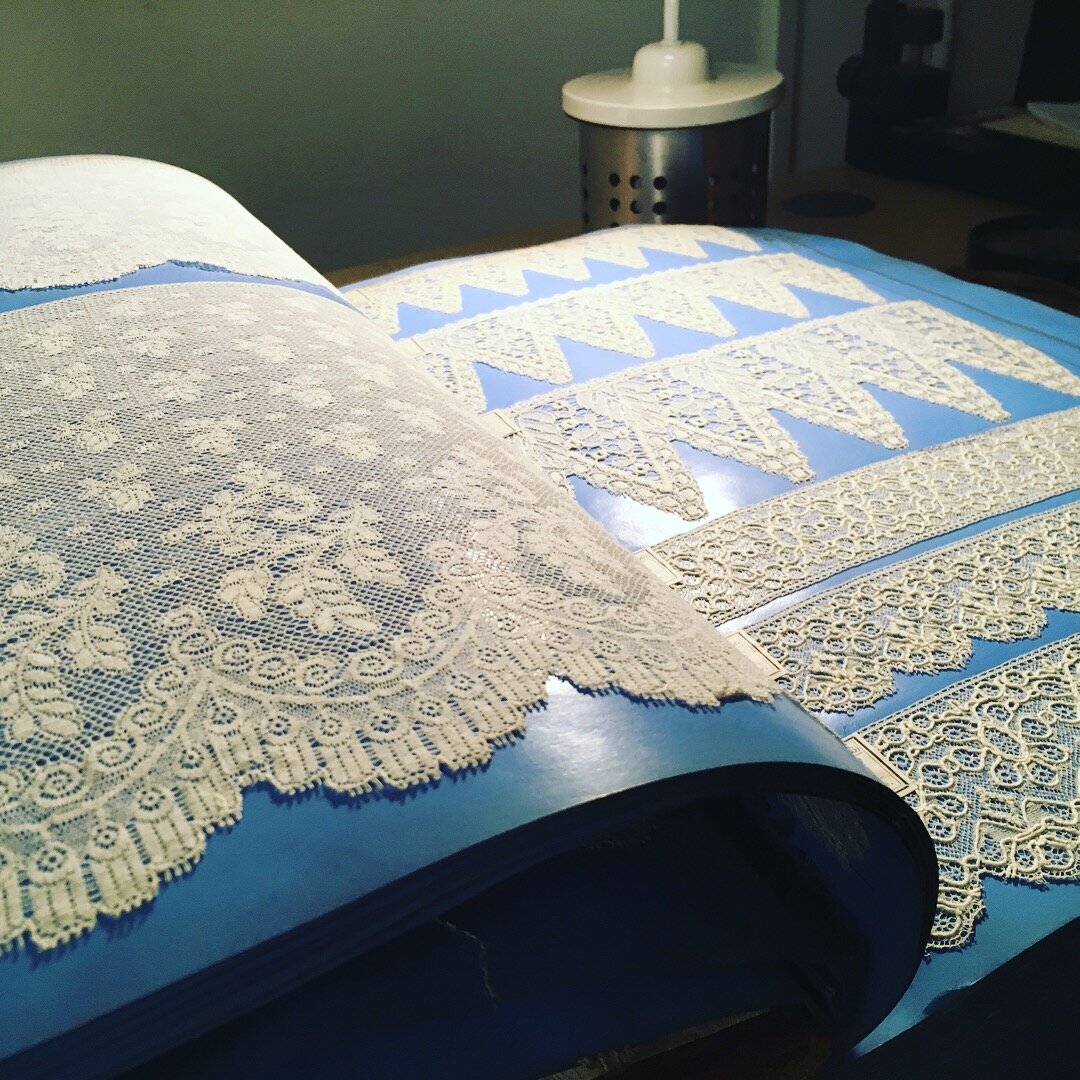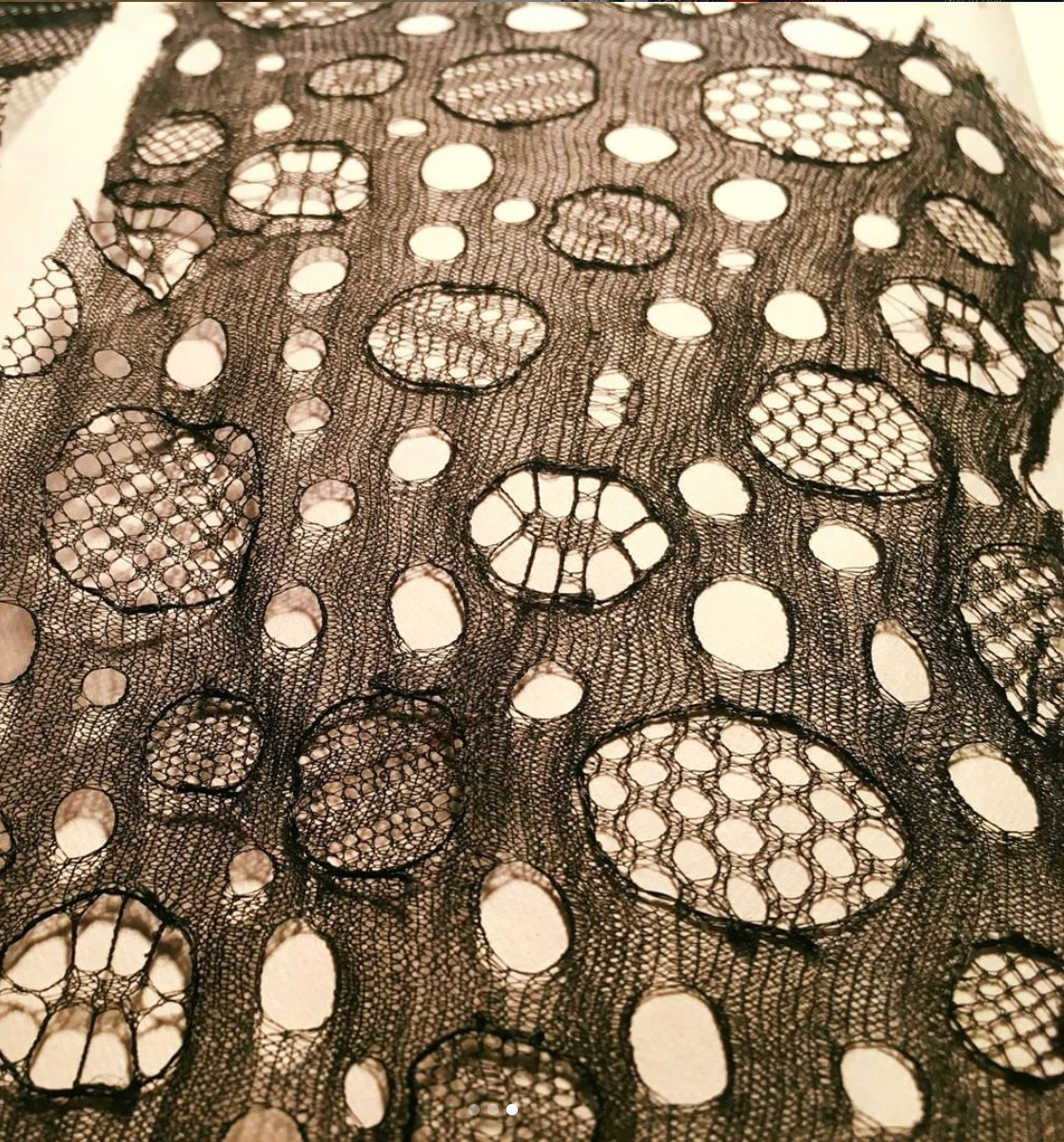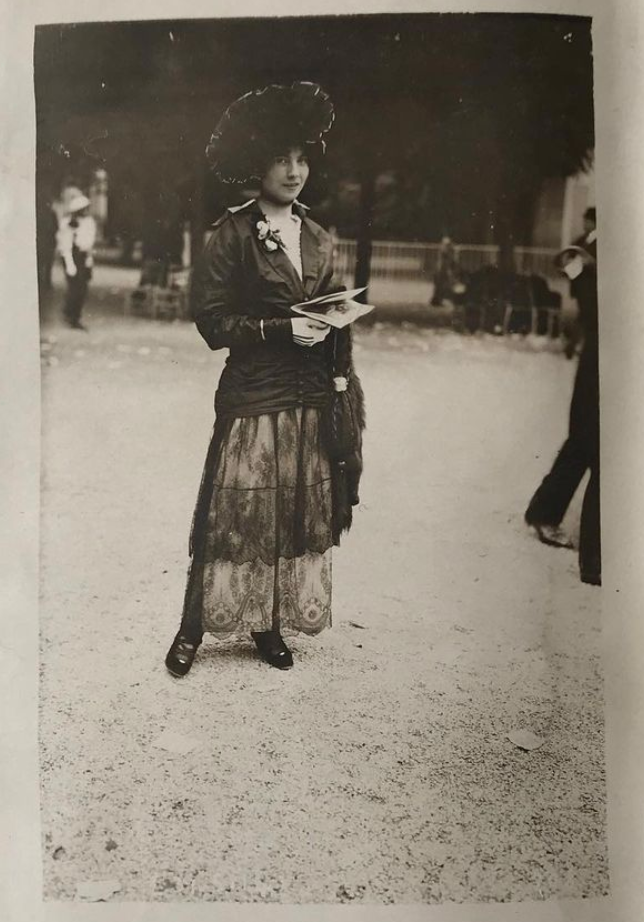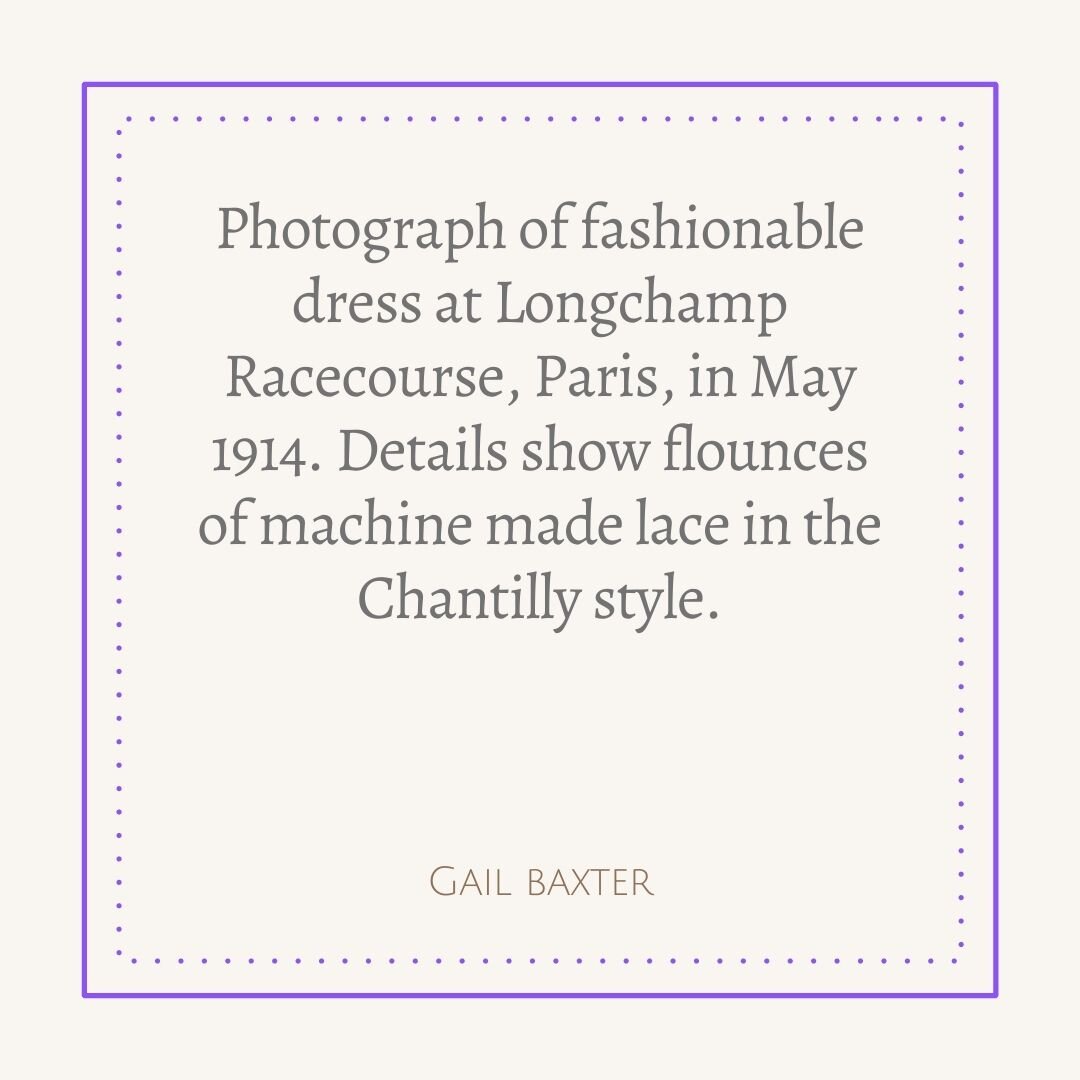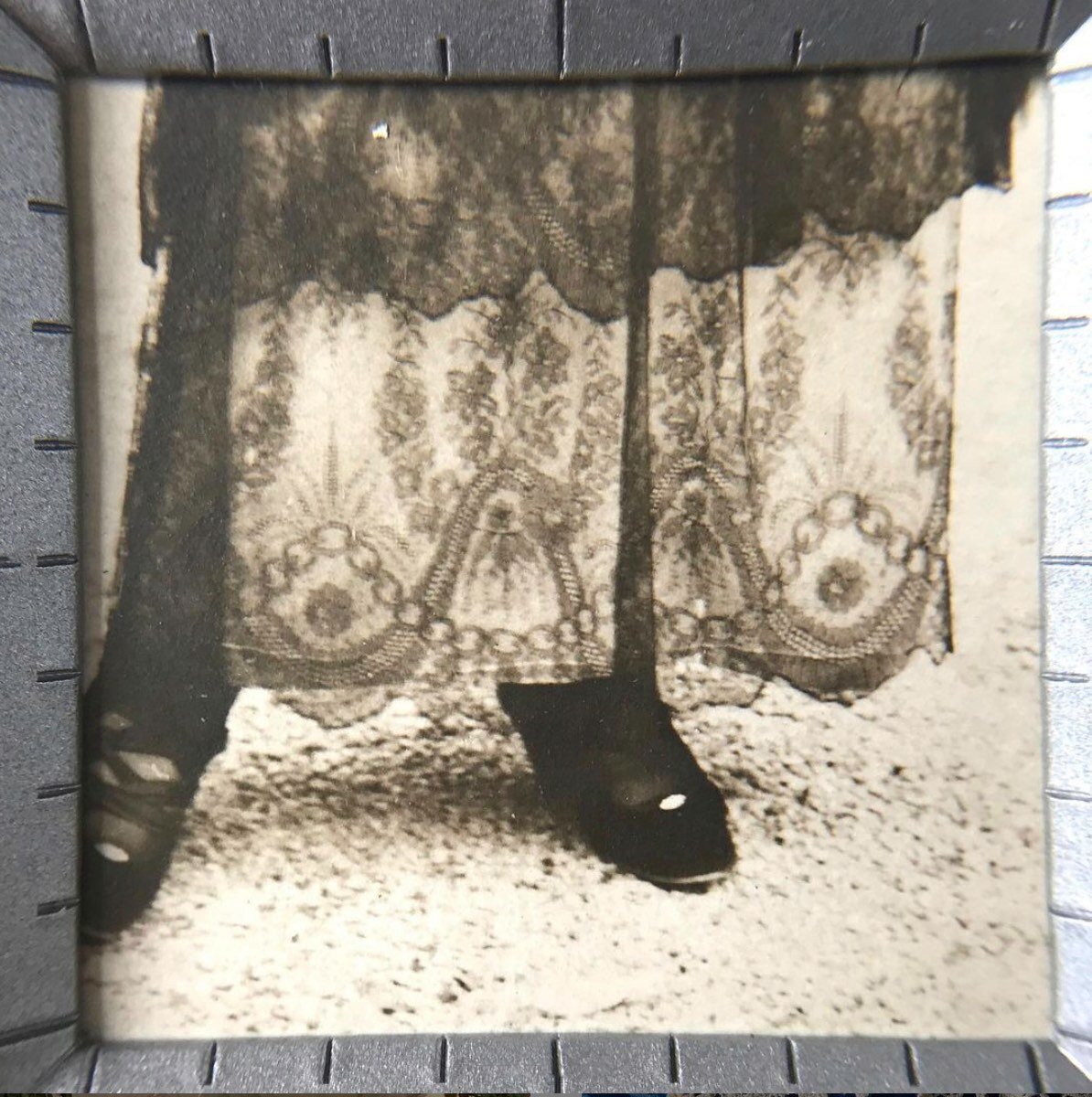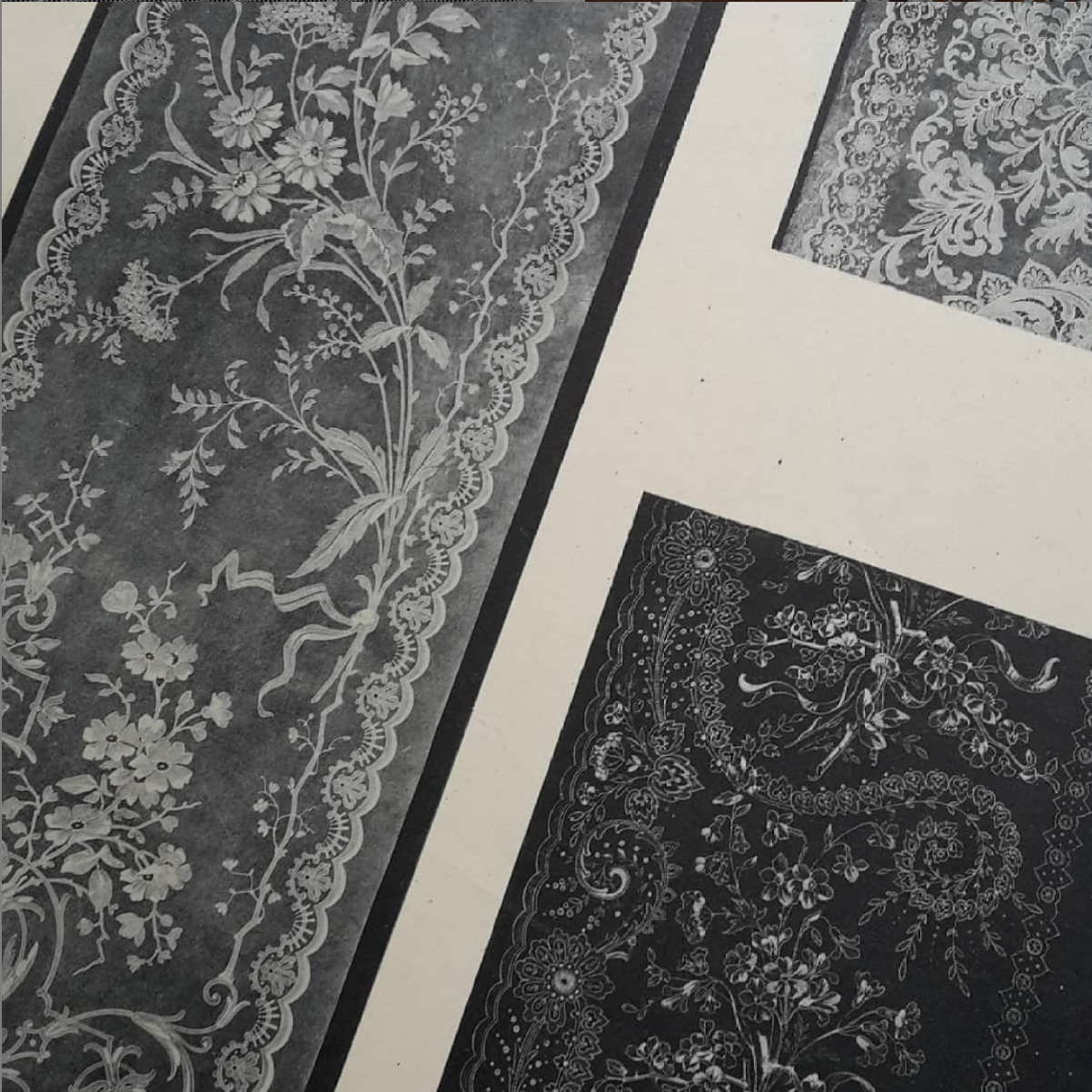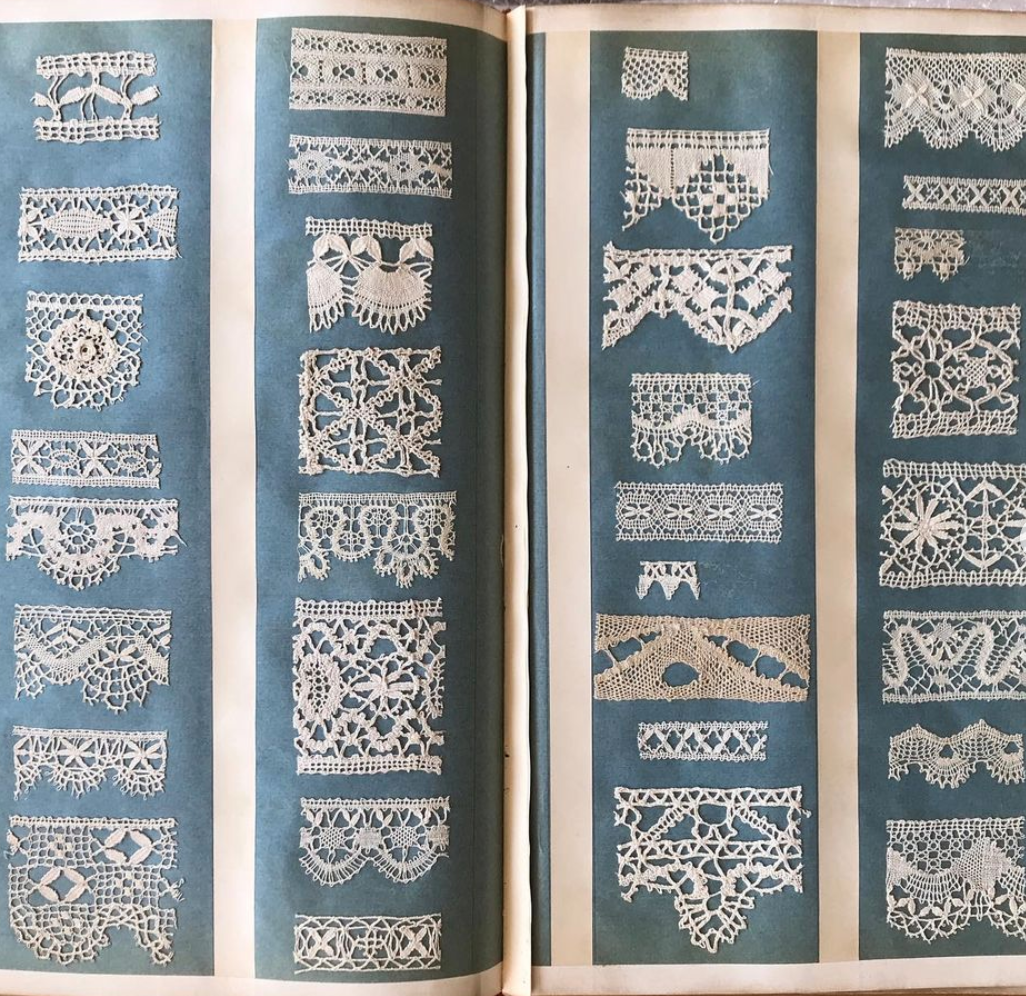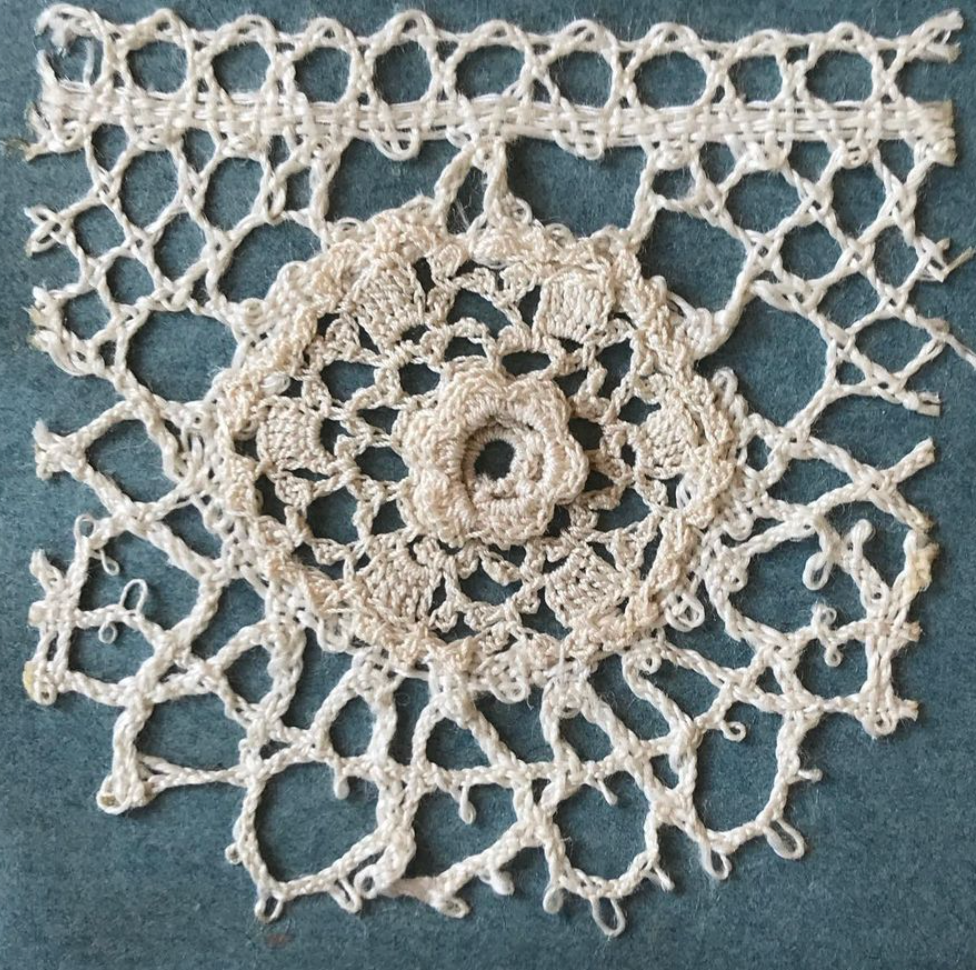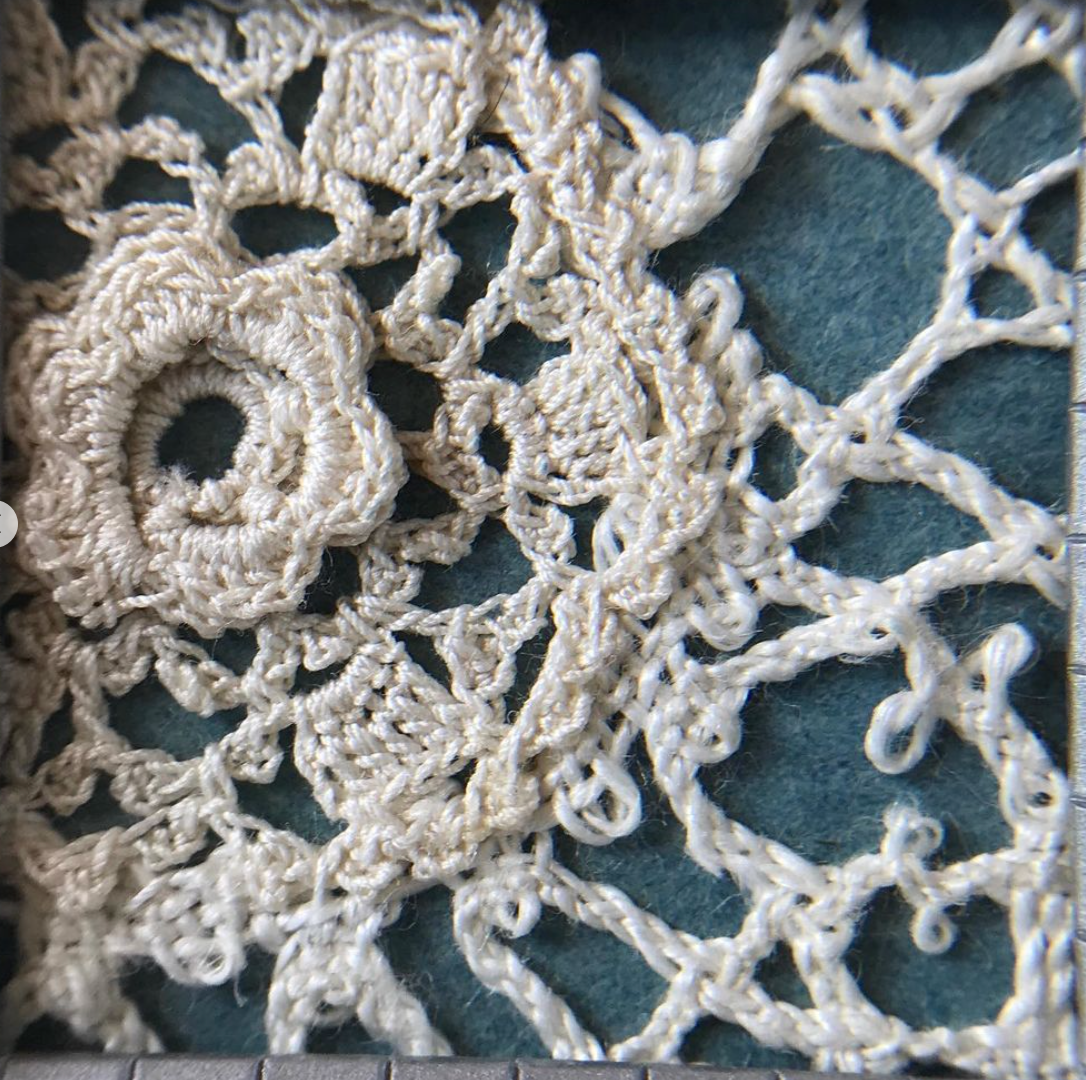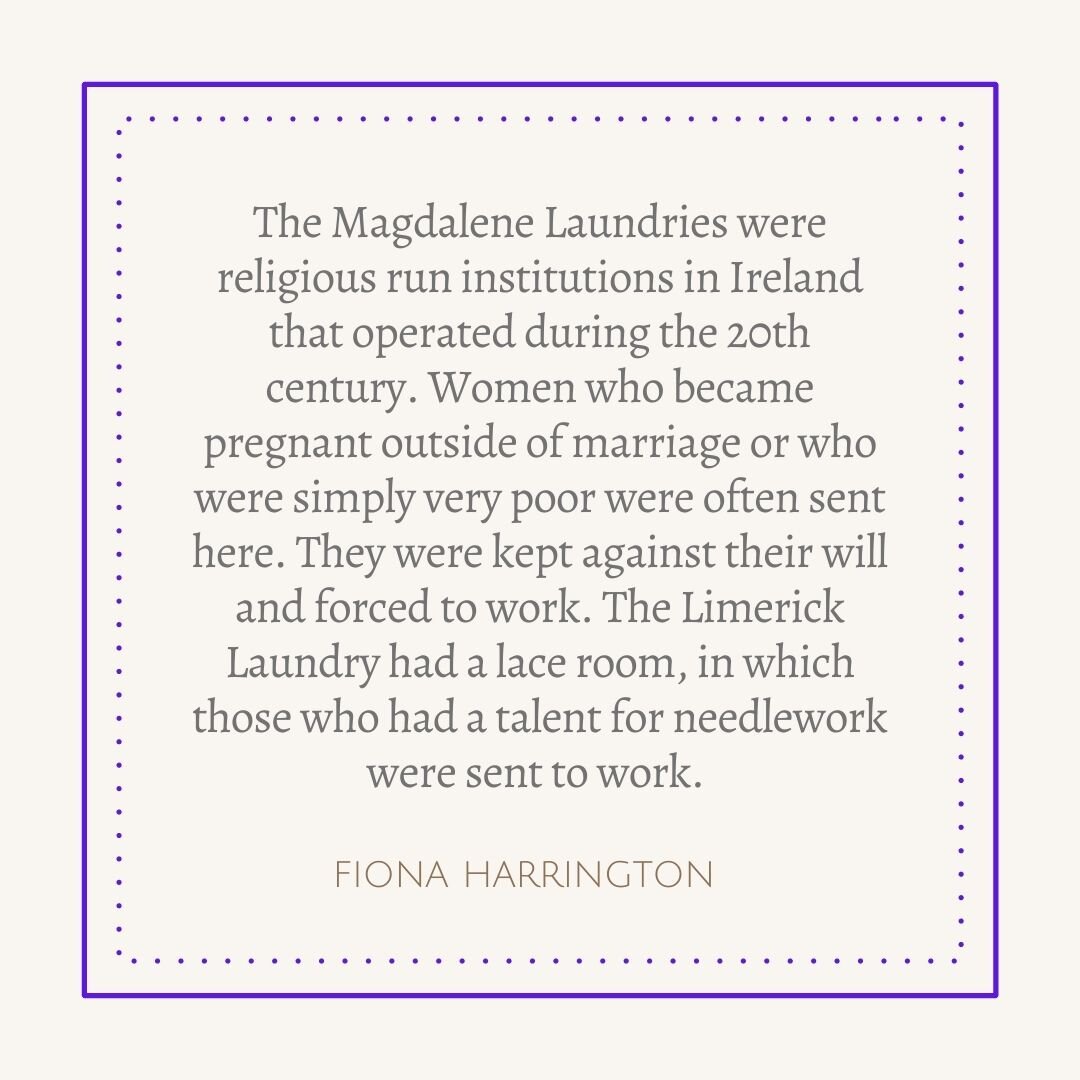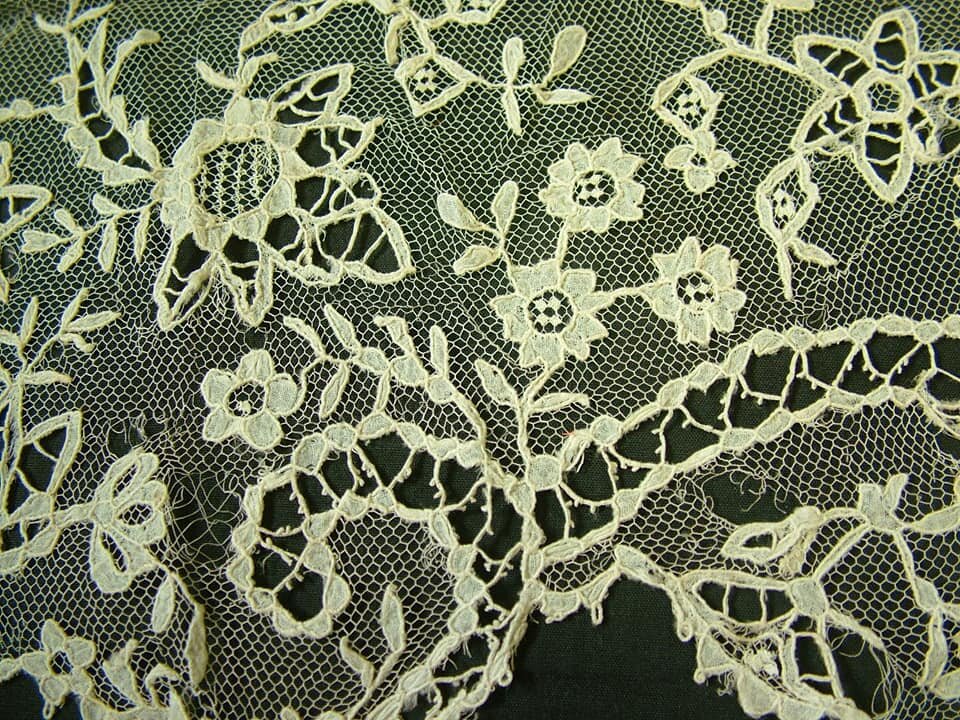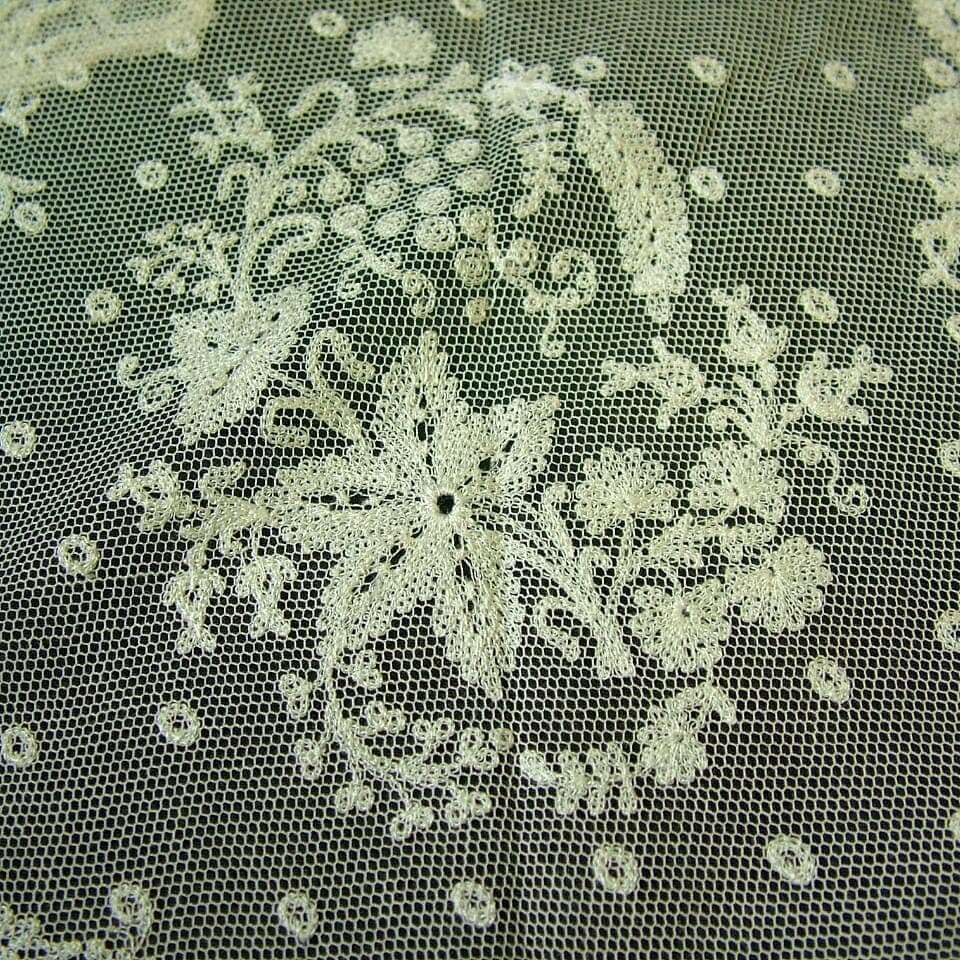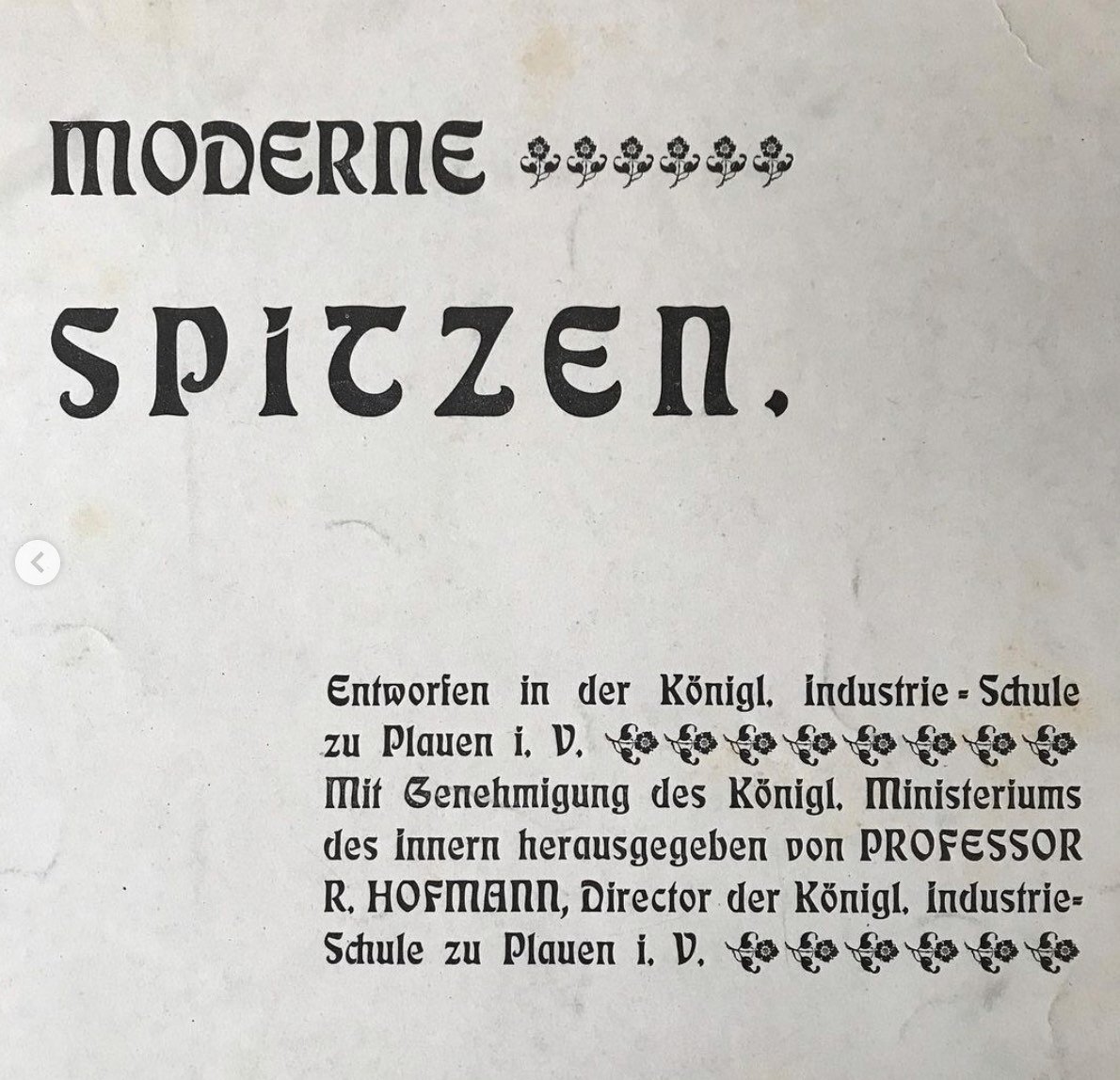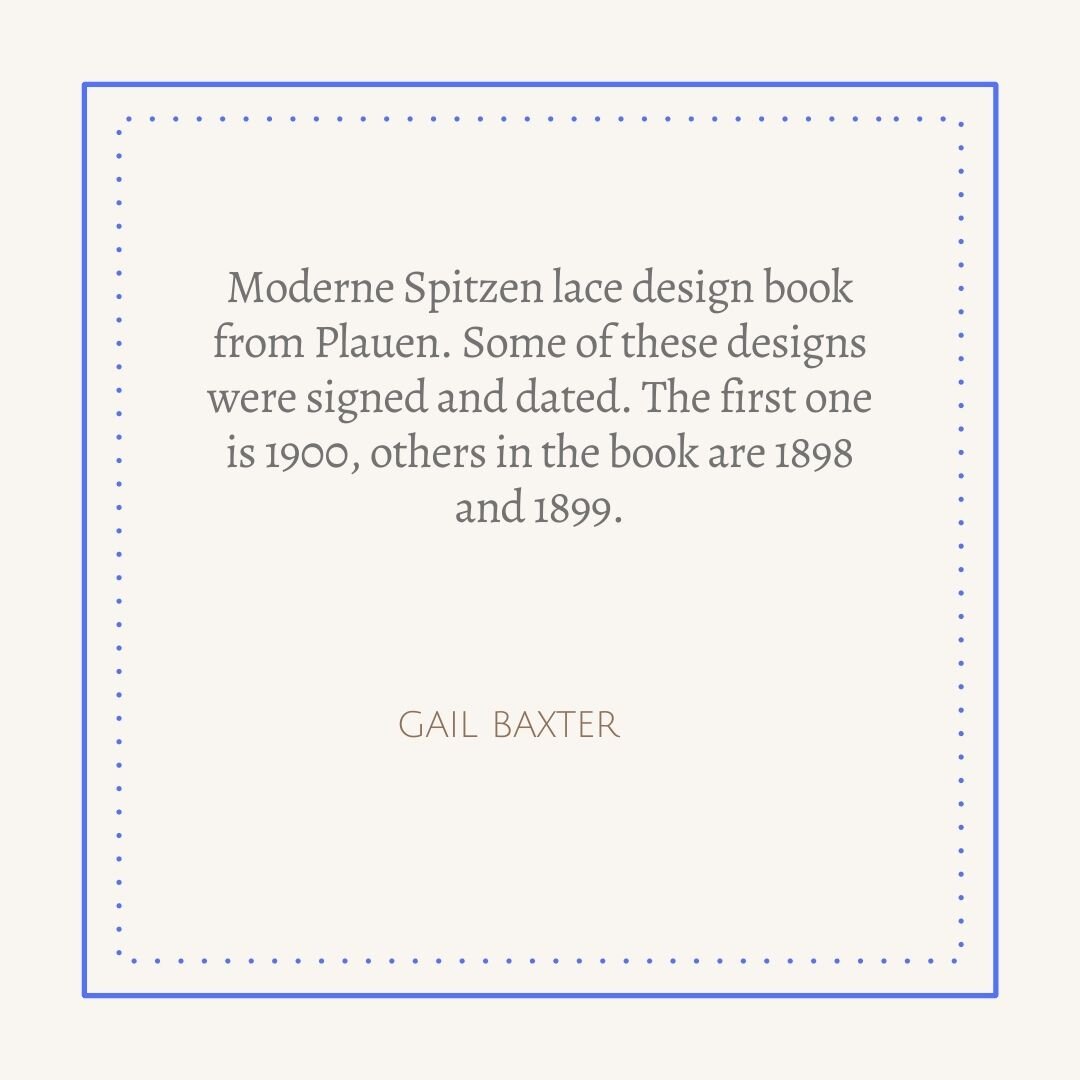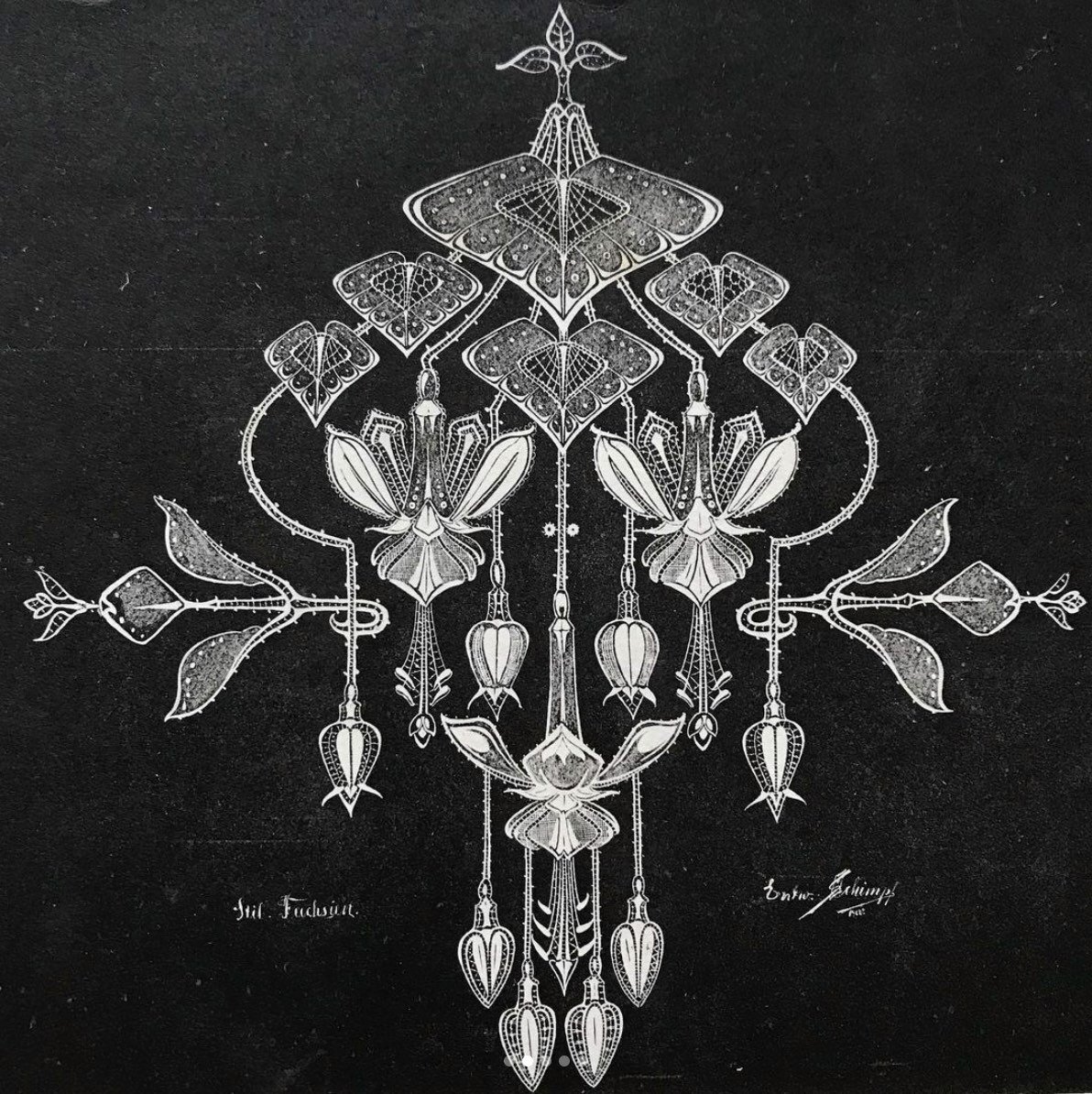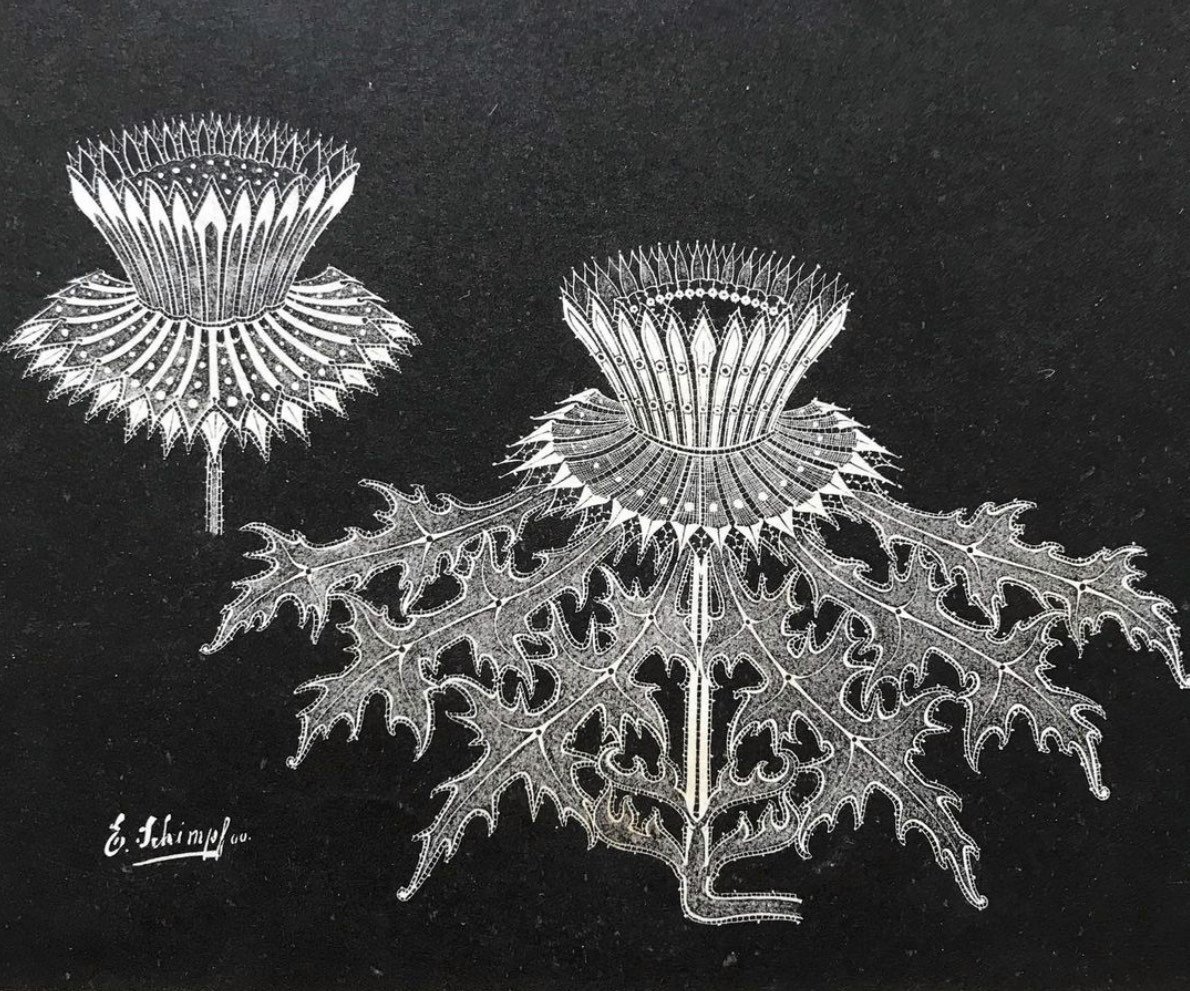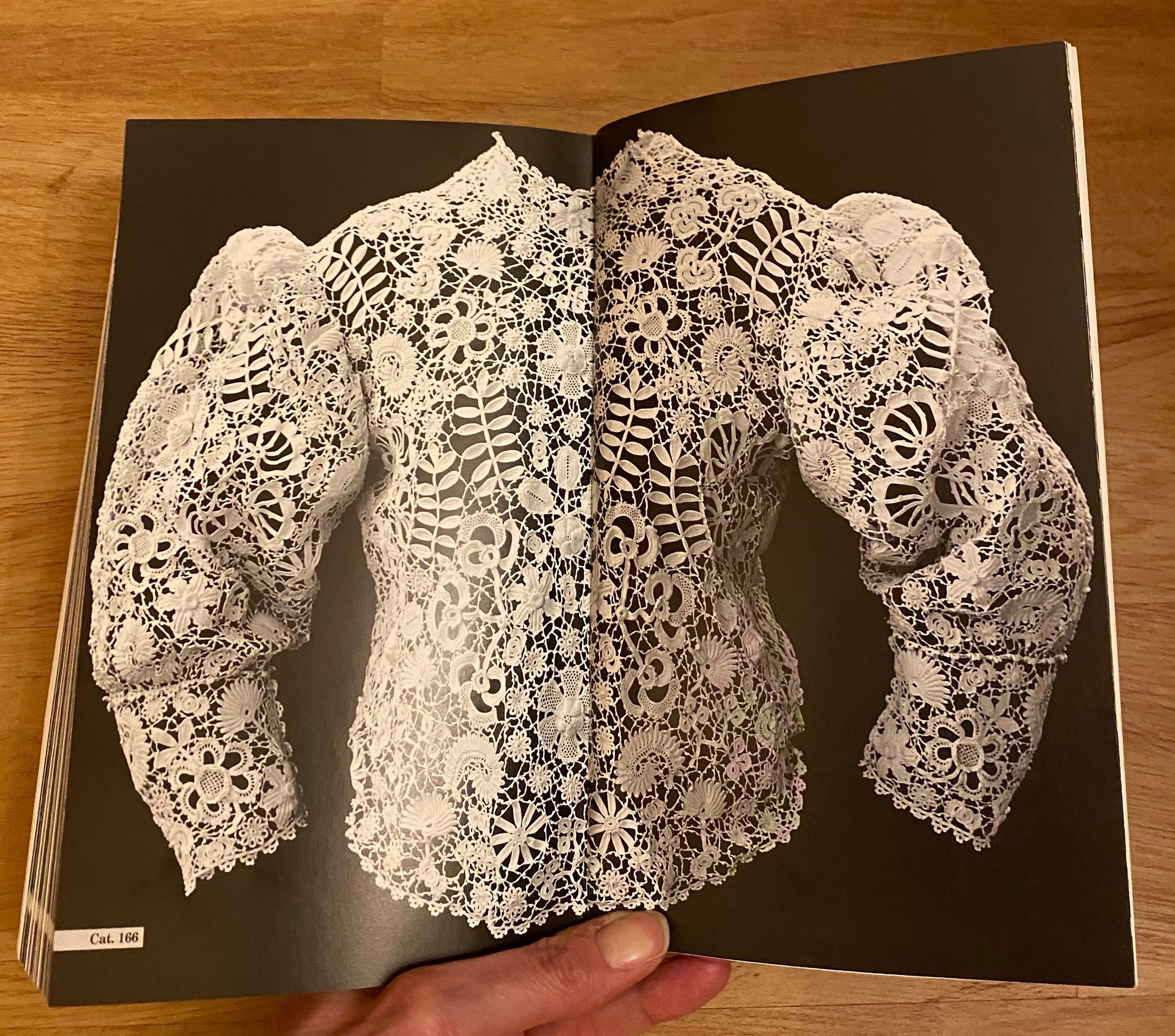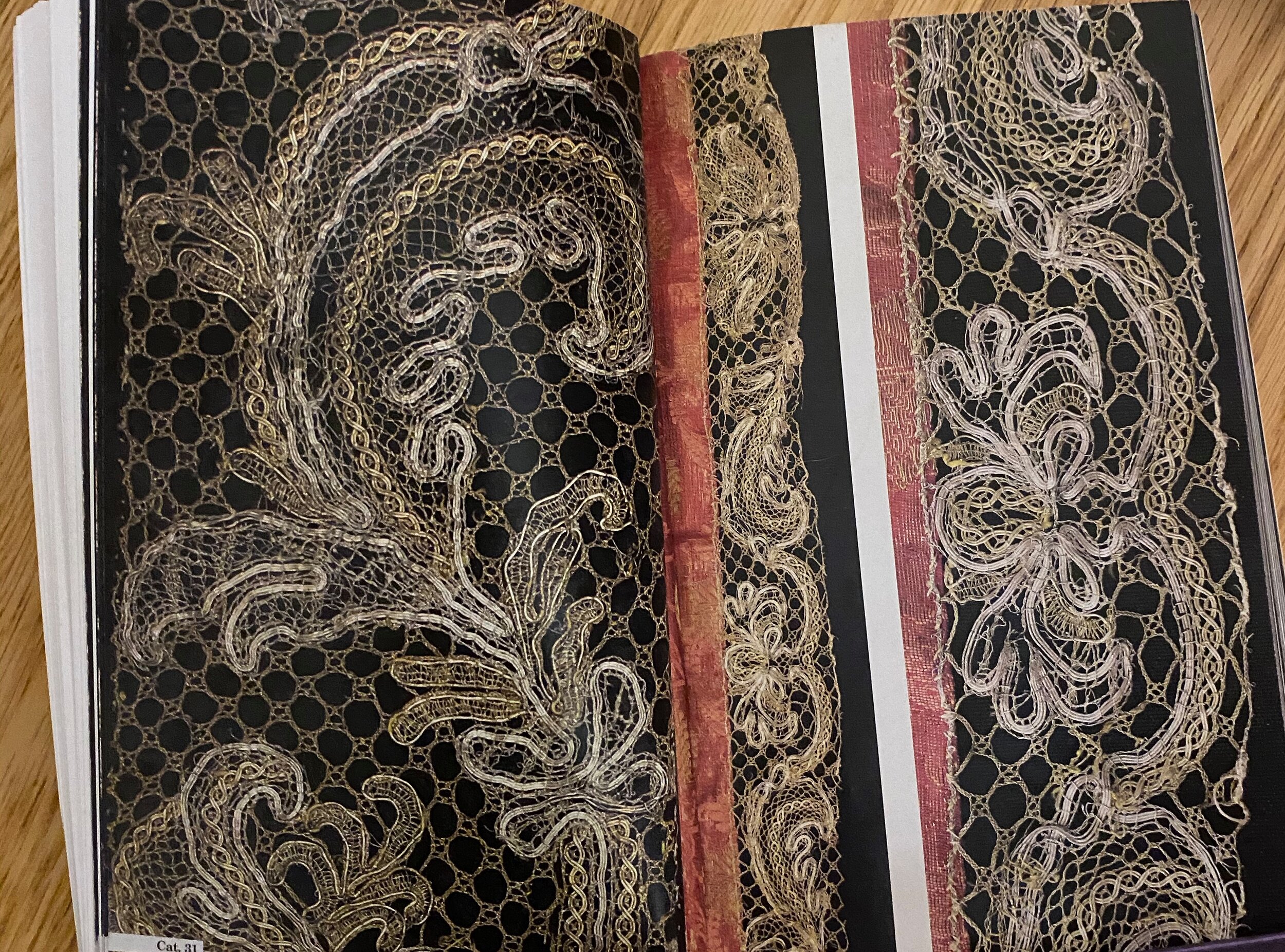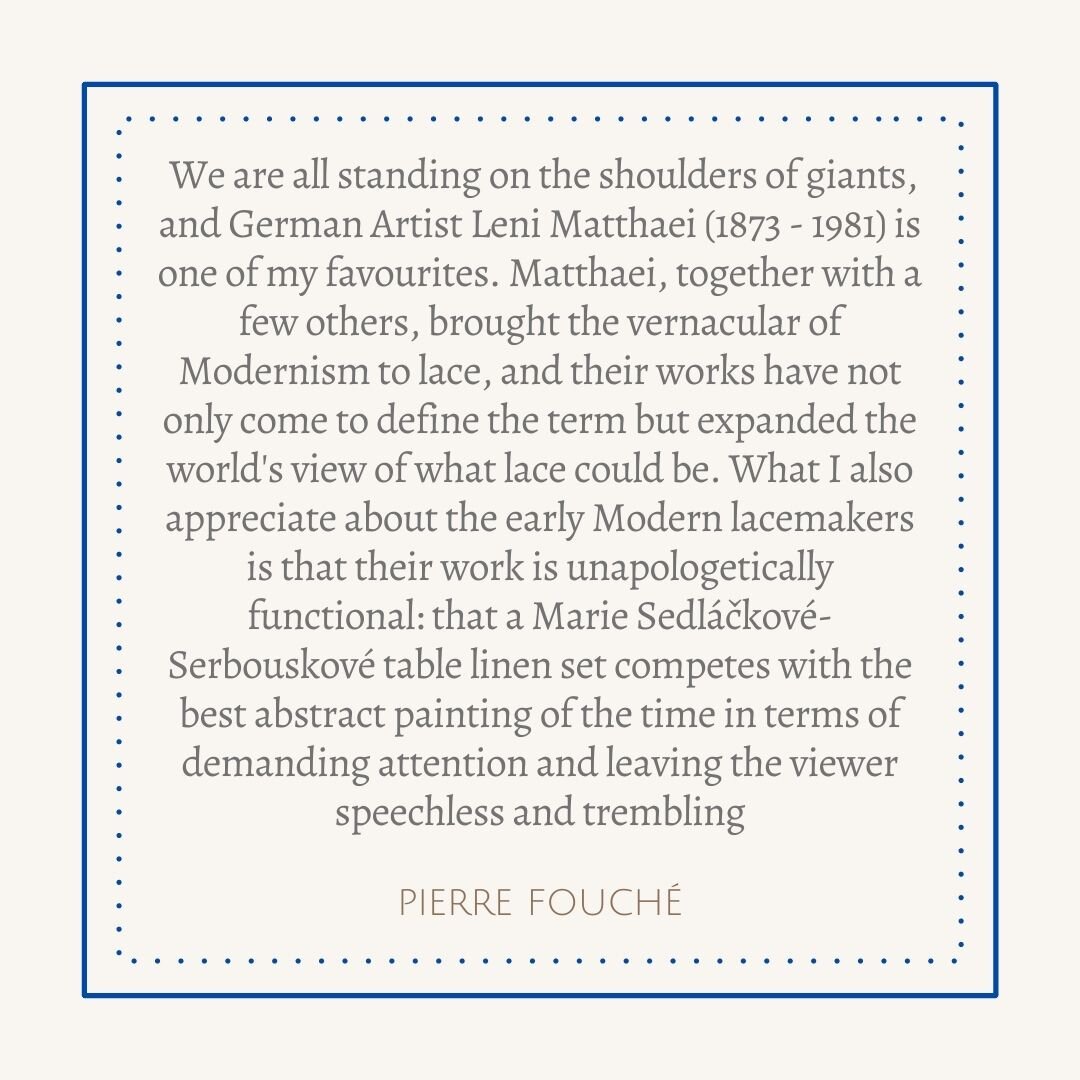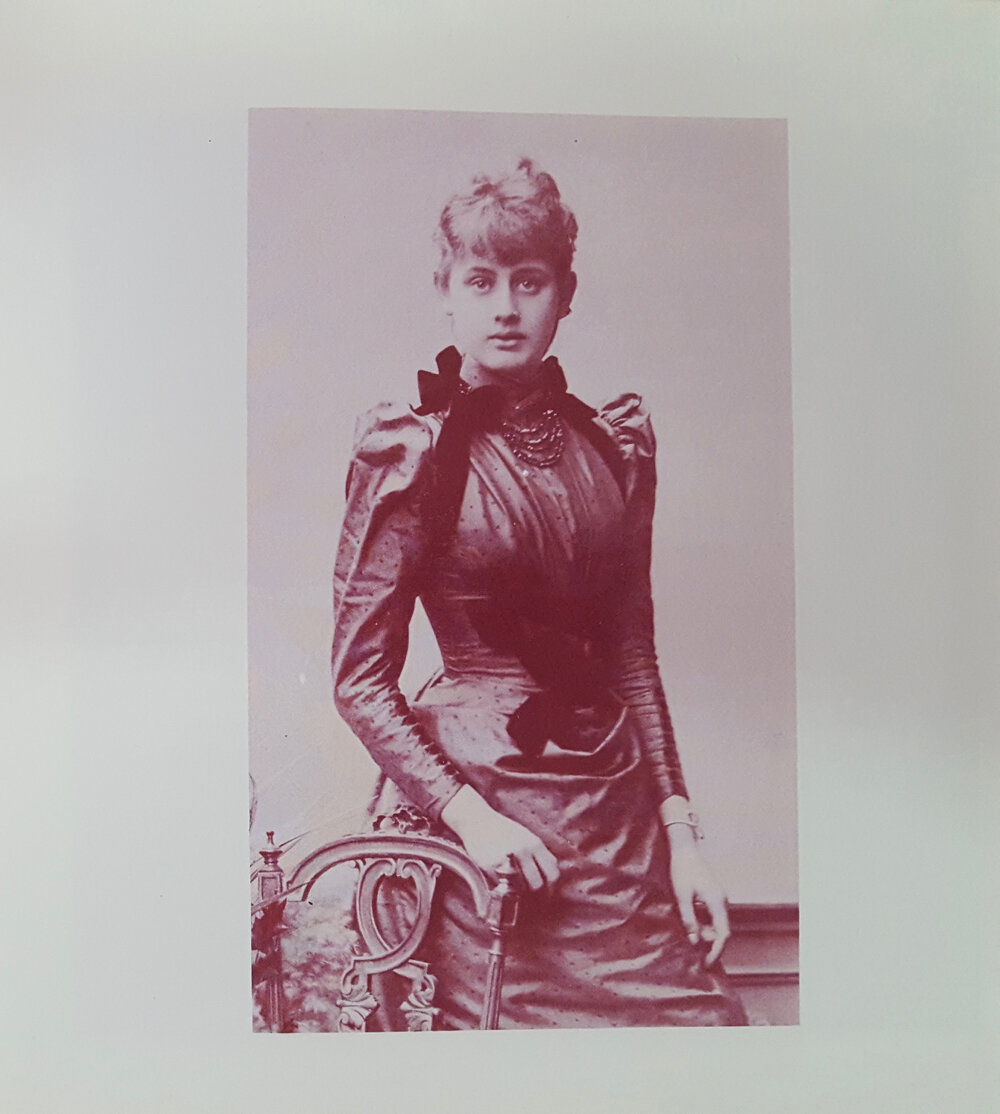Connections 2021 - Artists
Amy Keefer: Amy is a visual artist based in the San Francisco Bay Area. She holds a Master of Fine Arts from California College of the Arts. Hailed as "radical in its romance" her work is rooted in wearable art, embellishment, and uses the traditional craft practices of lacemaking and embroidery.
“I started making Lace in 2008 while working toward my MFA. I wanted to make political work that was connected to labour, class and craft. It was the history of sumptuary law that really inspired me to become a lacemaker.”
Aoife Collins: An Irishwoman living in France with her young family.
“I wasn't so much inspired to start making lace as I was driven to it by the urgent need to make something with my hands during the first round of Covid-19 lockdowns. When baking wasn't enough to satisfy that need, I remembered reading a piece years ago in the Irish Times about an artist by the name of Fiona Harrington working in Carrickmacross and Kenmare needlelaces. Something about the idea of lace as a medium for creative expression must have resonated for me to have filed it away in my memory for all of that time and then have it pop out so clearly when the time was right.”
Carol Quarini: Carol is an independent researcher, artist and lacemaker. She undertook her practice-based PhD at the University for the Creative Arts, Farnham. Her practice is inspired by domesticity, veiling, women’s history and subversive stitching. More details of her work can be found on her website www.carolquarini.com.
“I’ve always been interested in many crafts but it was a fascination with lace bobbins that made me want to know how to use them.”
Caroline le Calvar: “I learned bobbin lace when I was a teenager but I really started to make lace about ten years ago. I then started my own lace jewellery store and recently I have been working on small lace pieces for display. I do not consider myself an artist but a craftswoman above all.” Details of her work can be found on her Etsy Shop PiqueCoeurCaro
“I have always been very interested in textile arts and crafts. Bobbin lace is a demanding technique that requires patience. This slowness in the execution is what I like the most. Making lace allows me to meditate and to take a step back in our society where everything is very fast.”
Catherine Lillie: “I've been making lace- mainly Torchon, Honiton and Milanese- for over 30 years, fitted around my full-time job in Higher Education as an Academic Developer and being mum to three young children. As an introvert I find that I gravitate towards hobbies and interests in which I can be quiet and think, to counteract the people-focus of my job and parenting, so as well as lacemaking I also sew my own clothes, do blackwork embroidery, and enjoy yoga, ballet (dancing and watching!) and baking. I live in beautiful Beverley, a market town in East Yorkshire and am a member of the Wolds Lacemakers.”
“I started making lace when I was 10 when lessons were offered one lunchtime a week at primary school. There were more people who wanted to do it than spaces available and I was desperate to be chosen and luckily my name was drawn out of the hat. I took to it straight away and loved everything about it- from choosing patterns and threads to seeing the design grow, to looking at images and books about lacemaking. Over the years I have had occasions when the lacemaking has paused for various reasons but I've always been drawn back to it. I love the creative process, but also keeping this beautiful craft alive and developing.”
Dagmar Beckel-Machyckova: Educated at a lace school in Prague, Czech Republic, Dagmar has been pursuing both the preservation of traditional lace patterns and the possibilities of contemporary lace. Her work has been featured on the cover of the IOLI Magazine, and in "Lace, not Lace, Contemporary Fiber Art from Lacemaking Techniques” a contemporary lace exhibition in Hunterdon Art Museum in Clinton, NJ, featuring 26 artists from around the globe. I was inspired to make lace when I saw traditional lacemakers making it. To me lace is a never-ending puzzle waiting to be solved, and I love exploring its possibilities in both pattern and material.
“I have been making lace since I was ten, and over the years it has given me many things. Learning patience, attention to detail, and precision are all expected outcomes, but what I treasure the most are the connections I have made with other lacemakers. Knowing that there are people all around the world with whom I have a common language and a love for all things lace makes the world feel smaller.”
Denise Watts: Denise has been making lace since 1979 and the love affair with the doing quickly became a fascination with what it could do, and through this process became a language for self-expression. Denise’s current work focuses on women’s issues and she is a part of The Adventurous Lacemakers.
Even as a child Denise loved lacy fabrics, and as she learnt the different thread crafts as she was growing up, she wanted to make them fine and lacy. When the opportunity came to learn bobbin lace Denise found it wasn’t like learning something for the first time, it was like being reminded of something she had forgotten. Denise has always said, “It is not something I can take credit for, it was just something I could do."
Fiona Harrington: Fiona Harrington is a visual artist who works with handmade lace. Based in Ireland, her studies in fine art, textile design and lacemaking influence her practice. Through her work, she wants to challenge ideas about what lace is and how it is used, by placing lace within the context of contemporary art and design. You can find out more about her work through her website www.fionaharrington.com
“I went to see an exhibition in Birmingham called Lost in lace. There was not a lot of actual lace included in this show, but rather lots of work that used experimental approaches and materials that responded to themes, aesthetics and associations of lace. This ignited my interest and I decided I wanted to learn how to make lace. Once I did, I was hooked. I began to realise the importance of the practice and I quickly realised I didn’t want to make artwork about lace, I wanted to make artwork using lace!”
Gail Baxter: Having originally specialised in floral Bedfordshire lace I later developed my contemporary practice including contemporary netting. I have a PhD in the interpretation of lace in archives and am Research Fellow at Nottingham Trent University, working with their historic collection of machine-made lace.
“I fell in love with bobbin lace the first time that I saw it being made. Netting is a more recent fascination.”
Gillian Membury: “My mum and grandmother have always been the creative ones, they can knit and crochet which I can’t, although I taught myself to tat when I was 13. I have done tapestry, embroidery and cross-stitch but I didn’t feel particularly creative until I discovered lace making. My in-laws gave me a boxed starter kit and I taught myself.”
Hajja_Malta: Run by Bibi. Hajja is a social enterprise that uses Maltese bobbin-lace making as a tool for healing & inclusion. In collaboration with NGO's on the island, we aim for social & cultural impacts.
“When I moved to Malta - a tiny island in the middle of the Mediterranean sea, full of beauty and history - I came across lace and fell in love. Since I am a sucker for vintage, traditions and anything old school, I signed up at the Society of Arts and started my bobbin lace beginners course”
Hannah Garcia: “My earliest textile memory was learning to stitch alphabet pictures in kindergarten with chunky acrylic yarn on burlap—I was so enchanted that I asked to stay in at recess to do a second. Since then I have continued to learn new ways to manipulate string, most frequently accompanied by tea and cats, surrounded by the beauty of the Pacific Northwest.”
“I first encountered the charming craft of bobbin lace while at the John C. Campbell Folk School in North Carolina in 2009. Although I was fascinated, at the time I felt that I had enough fiber art related interests and that I should draw the line at lace. Several years later a friend introduced me to tatting, and this led to an unexpected new interest in the finer needle arts. I remembered bobbin lace and was itching to learn when I discovered another friend knew the basics and was willing to teach me! Forthwith bobbin lace became my main craft and my infatuation has yet to wane.”
Isa Hargraves: Lacemaker since 2010, interested in the use of metallic threads for traditional patterns or adapting patterns for the 21st century.
“The beauty of lace, inspired me to start making lace.”
Jane Atkinson: Jane takes environmental breakdown as the focus of her art lace, an agenda set by her local landscape. A former journalist, she has published three books and is one of The Adventurous Lacemakers, teaching via Patreon. You can find out more about her work through her website www.contemporarylace.com
“My grandmother made Downton Lace in the 1920s; her pillow was a conversation piece in her lounge when I was a child, but she wouldn’t teach me. I finally found someone to help me aged 25.”
Jane Fullman: “Taking inspiration from the patterns of nature and the transient and ever-changing natural world, I create contemporary, distinctive, unique jewellery using wire and techniques from the ancient craft of bobbin lace making to weave intricate pieces of wearable art. I am the creator of Instagram Lace Challenge. I am always looking to develop my lace practice and learn new lace techniques. I enjoy pushing the boundaries of lace making to highlight what is possible with this ancient craft and show the world lacemaking is not a forgotten craft.”
JC Middlebrook: “I’m Jayne Childs. Middlebrook was the middle name of my grandad and I adopted it for my business in 2010. I’m an artist working in Nottinghamshire, UK. I work in machine made laces, either on sacrificial background or embroidery on net. www.jcmiddlebrook.co.uk “
“I was drawn to lace by the ghosts of textile making here in the East Midlands, having grown up surrounded by the small factories.”
Jenny Davies: “For more years than I care to admit, I have been making and teaching traditional English and continental bobbin laces to adults and children, learning from some very knowledgeable teachers both in England and overseas. With a history of Bedfordshire lacemaking in the family, I specialised in this, which led to my being invited to teach Bedfordshire Lace in France for many years.”
“In my mid-twenties, I was attracted to a lace bobbin in an antique shop, but had no idea what it was for... until my mother explained it to me and revealed that our direct ancestors had been lacemakers! I love the social history; the variety of different laces (and the technical challenges they pose) and the joy I see in peoples faces when they realise that they too can make lace.”
Joyce Ann Martin: “I make lace, do graphic design, and run around after my cat and family in sunny California, USA. In addition to lacemaking, I enjoy other fibery pursuits like knitting, embroidery, sewing, and spinning.”
“My lacemaking journey actually started six years ago as an interest in weaving; since my small apartment could not handle a floor loom, a fiber friend suggested I look into bobbin lace as a sort of miniature weaving. I took my first bobbin lace classes at The Lace Museum in Sunnyvale, CA and was absolutely hooked! A modern lace exhibition was running concurrently with my first forays into lace, and I found great inspiration in the meeting of traditional craft and new application. That encouraged me to start exploring different lace styles to begin building up my palette of lace techniques.”
Lauran Sundin: “My background is in weaving, architecture, and Japanese aesthetics.” You can find out more about Lauran’s work through her website www.lauransundin.com
“Frustration with the limits of on-loom weaving led me to explore off-loom techniques. This led me to Bobbin Lace – I realized the Bobbin Lace technique allowed me to change warp for weft, weave in any direction and create holes at will, this was exactly what I was looking for.”
Limy: Limy is a lacemaker who lives in Japan, she didn’t like knitting when her mother taught her how in her childhood. Time goes by and one day she picked up a crochet book in 2012 since then she is hooked on lace making.
“I started making laces with a crochet hook. All I needed was a hook and a ball of thread, it was simple to start something new.”
Lindy de Wijn: “I am a bobbin lacemaker and public artist based in Melbourne Australia, who loves creating works in all scales and mediums. I love blending techniques and experimenting either alone or with other creatives.”
“I first saw lace being made by a family friend visiting from the UK when I was a young child. I watched the bobbins dance across the pillow and was memorised. This is something I had to learn!”
Michéle Kelly: “I live in Northern California and grew up learning and enjoying many types of handwork and the arts.”
“Not being able to achieve the effect that I was looking for, led me to lace making.”
Maria/thread_lacefully: “It was my grandmother who taught me how to make lace when I was a little girl. For many years I didn't touch my pillow but during the pandemic, I got a lot of free time and decided to pick it up again. I'm very proud to follow in my grandmother's footsteps.”
Marian Nuñez: Marian was born in Vigo (Spain) and develops her studies as a graphic designer in advertising studios. She learns bobbin lace in childhood from her mother's hand and conducts studies related to bobbin lace. She currently works in the school of arts and crafts in this city.
“I was inspired by graphic design and the counterpoint between these two worlds, graphics and bobbin lace.”
Maclejan: “I have been lacemaker for twenty years. The meeting with a lacemaker was the starting point. After a traditional education, I quickly wanted to create my own contemporary models and use bobbin lace as a means of expressing my creativity. Lace is a real passion for me and I will not be able to do without it!”
Noe Carrouché Gazzino: Creative and dynamic single mom of two, who loves teaching.
“I was 14 years old when I saw about 20 women enjoying their GRANNIE CON, ( I call it this way) and their hands were moving sooo fast, and what they created was soo beautiful I was speechless... That day I fell in love with bobbin lace.”
Pierre Fouché: Pierre introduces himself as a lacemaker. This designation highlights his interest in the techniques, materials, histories, and social relevance of textiles. His respect for technique, tradition, and innovation has earned Fouché his place within the craft establishment as an internationally respected practitioner and teacher of contemporary bobbin lace. His penchant for arcane media and aesthetics has led his practice to include macramé, drawn thread embroidery, encaustic painting, and pinhole photography, as well as traditional painting, drawing, and printmaking. You can find out more about Pierre’s work through his website www.pierrefouche.net
Sylvia Piddington: Sylvia is a contemporary fibre artist with a background in cell biology, clinical biochemistry, cancer research, spinning and weaving, leadlight window making, silk painting, basketry and bobbin lace making. She has exhibited overseas and in Australia and has self-published a book of her artworks “A Lace Space”.
Her inspiration for bobbin lace making came from a class with Rosemary Shepherd in Sydney in 1978 and she has been hooked on this most creative form of weaving ever since. Now aged 75 she continues to experiment with new ideas, thoughts and dreams exploring and expanding lace and basketry with passion – sometimes with quite surprising results.
Theresa Kelly: Specialising in Contemporary Carrickmacross Lace techniques Theresa has won the National Eleanor de la Branchardiere Award for Innovation in lace design at the RDS three times and at the OIDFA World Lace Congress in Finland and the Sally Johnson Trophy. She exhibits regularly in solo and group exhibitions.
“I discovered the beauty of Carrickmacross Lace after moving into the area. I was inspired by the potential lace had, to use it as an expressive artistic medium. Lacemaking forever inspired me to continue on this wonderful exploration of art and its journey through my life.”
Vesna Šprogar: “During college, I attended a bobbin lace workshop, which put me firmly on the road of lacemaking. It was there I first learned about tatted lace, which is my preferred technique.”
“Idria bobbin lace. I remember seeing bobbin lace doilies as a child. They were so delicate, full of details, and I always wanted to learn to make them.”
Vicki Taylor: “I have been a lacemaker for longer than I care to remember. Every day I learn something new and my greatest reward is to be able to pass this learning onto other lacemakers looking for something different.”
“I was inspired by an image in a magazine of a lacemaker with a pillow full of pins, dots and thread. I was intrigued and vowed to learn one day whatever it was I was looking at!”
Yuki: “I’m a bobbin lace lover and have studied various laces, especially Binche, Chantilly and Flower laces. These days, I’m so interested in designing patterns for beginners.”
“A businessman who had started learning to make bobbin lace while living in England. His favourite way of surviving long flights was making laces without sleeping.”










